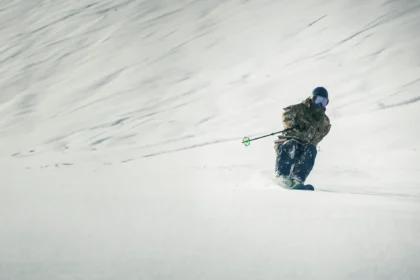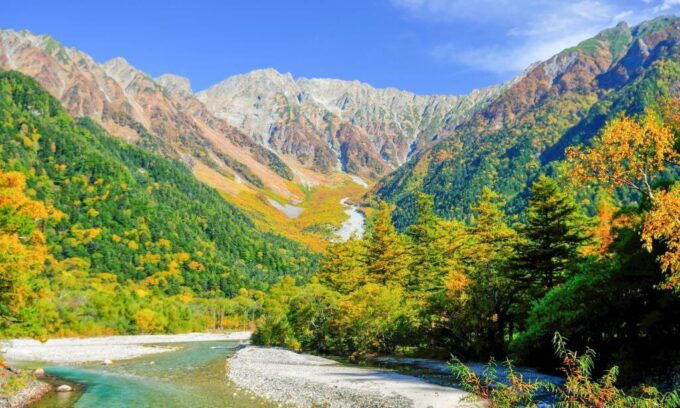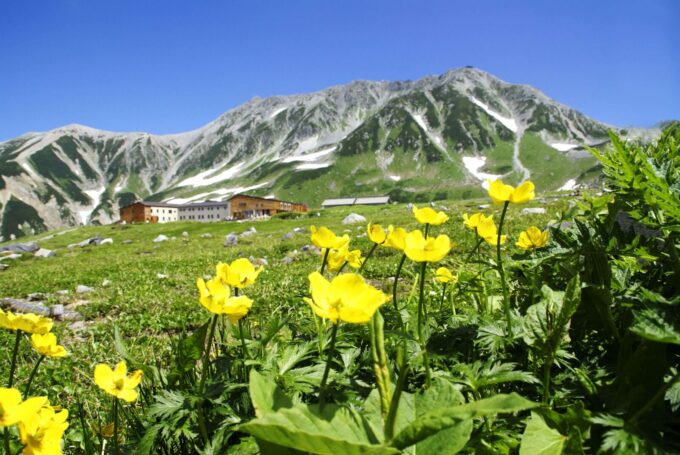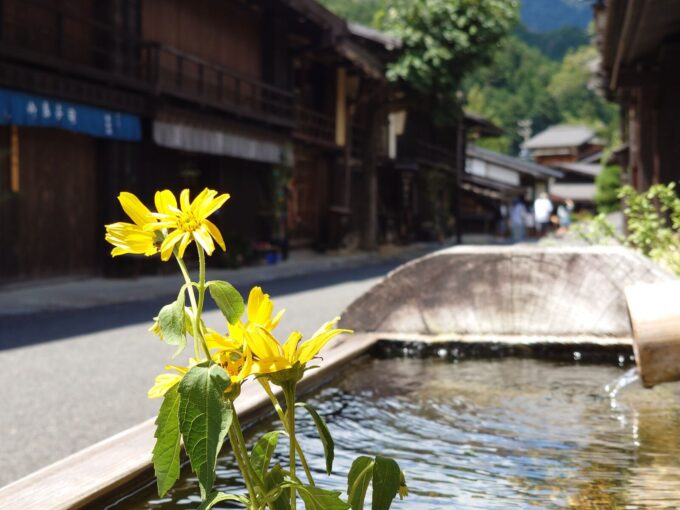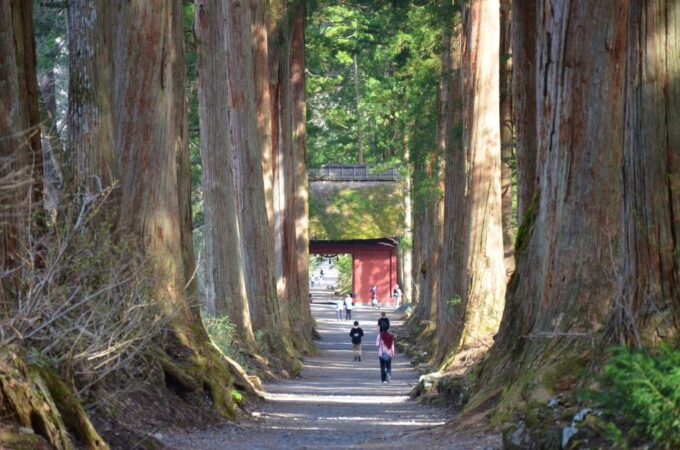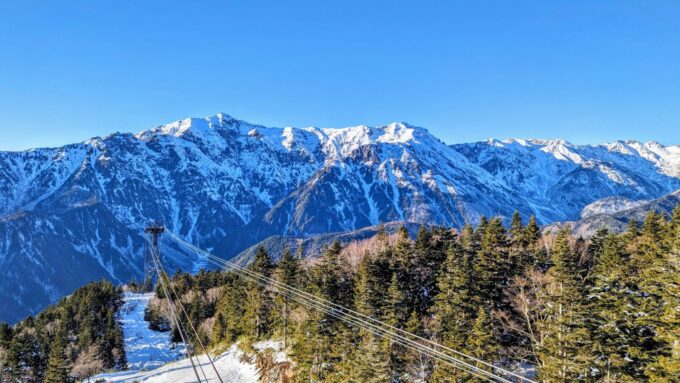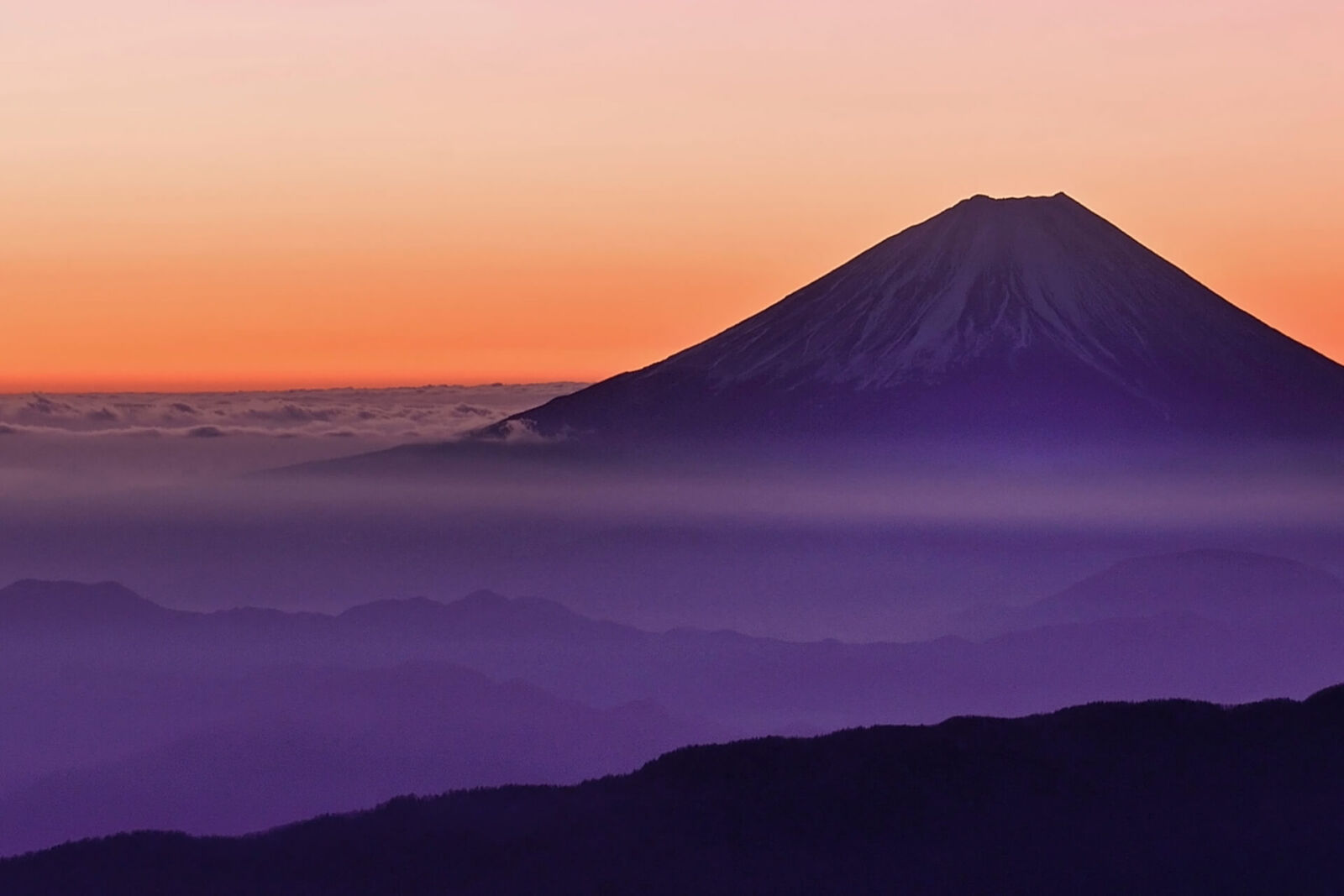
Within easy access of Tokyo, Nagoya, Kyoto and Osaka, our home region of Central Japan boasts the best hiking, trekking and mountaineering in the country. It is here that you will find the majority of Japan’s tallest mountains, expansive forests, pristine river and seemingly endless trails ranging in duration and charter. On this page you will find the following information:
1 / Best Hiking Areas in Central Japan
2 / Recommended Trails in Central Japan
3 / Trekking & Mountaineering inc. Caving & Rock-Climbing
4 / Popular Outdoor Stores in Japan
5 / Book With Us! Nagano’s No.1 Tour & Charter Operator
For more travel adventures experiences and destinations, see our main ‘Japan Travel Adventure’ page. We hope this information is helpful in planning your next adventure in Japan.
1 / BEST HIKING AREAS IN CENTRAL JAPAN
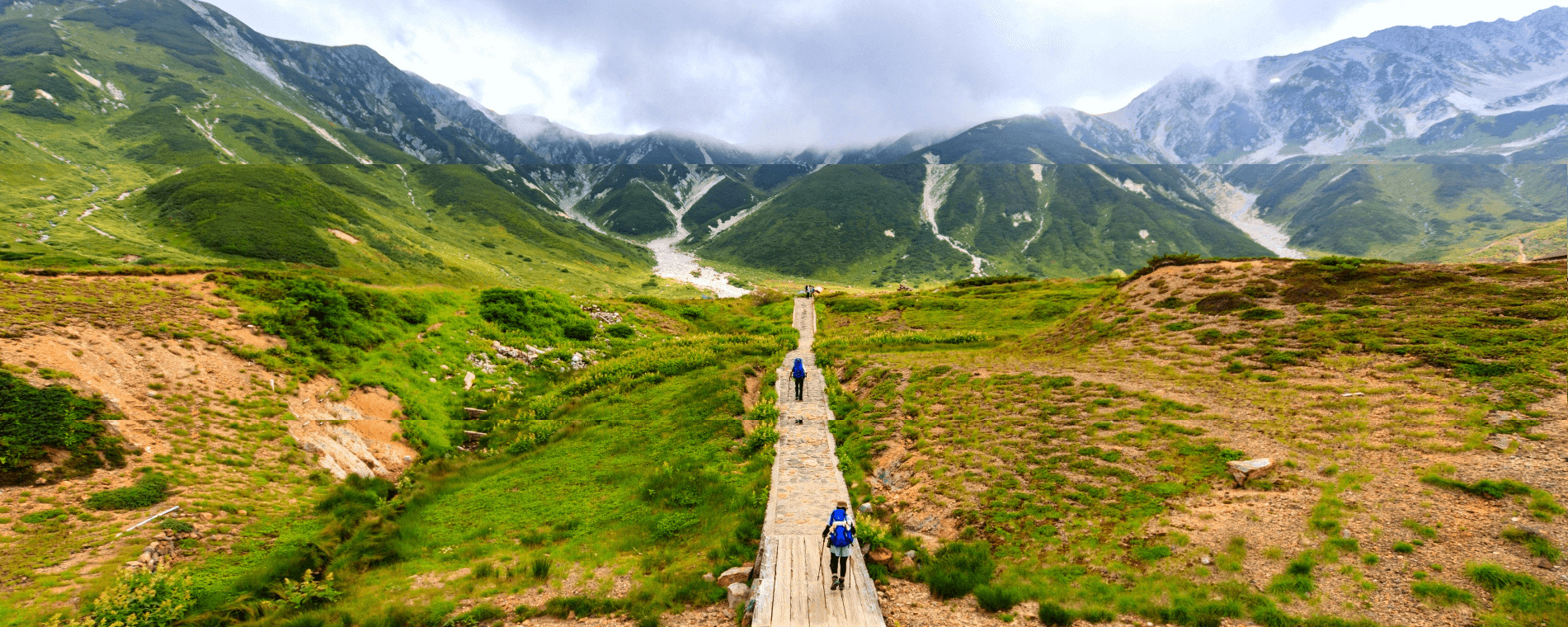
Blessed with multiple national parks including Joshinetsu Kogen, Chubu Sangaku, Myoko-Togakushi Renzan, Hakusan, Minami Alps and Fuji-Hakone-Izu, Central Japan offers Japan’s best hiking, trekking and mountaineering. The region boasts the majority of Japan’s tallest mountains including all three of its most sacred peaks – Mount Fuji, Mount Tate and Mount Haku - see our 'Well-Being, Spirituality & Tradition' page for more information.
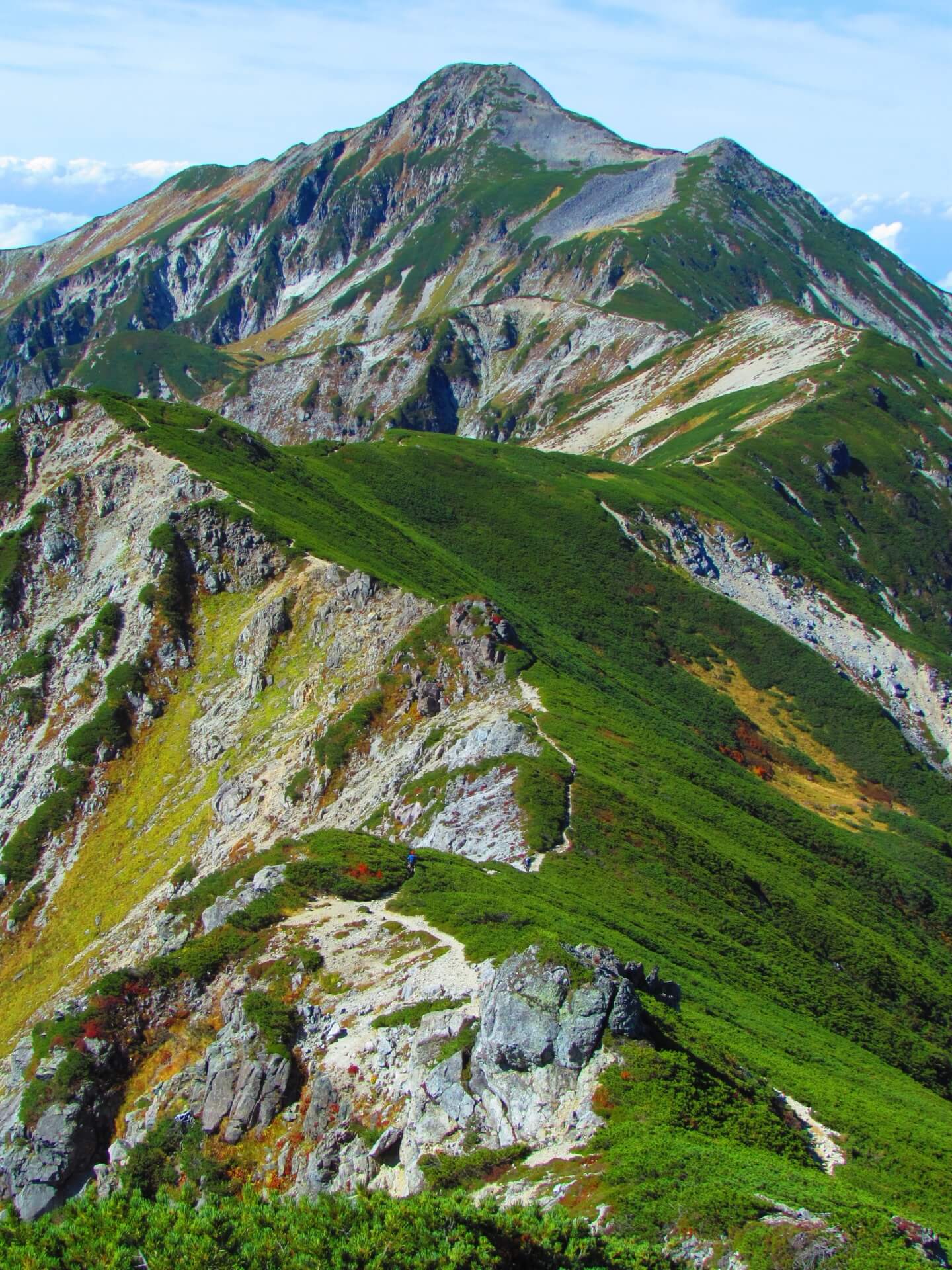
Buried in deep snow through winter during which time only expert mountaineers should attempting trekking or climbing, the main hiking season is from June to October as the snow recedes and a vast alpine region becomes accessible. Hiking courses range from leisurely trails of a couple of hours and suitable to anyone of reasonable fitness, to multiday treks over 3000 metres requiring expertise, professional gear and in many cases, a local guide.
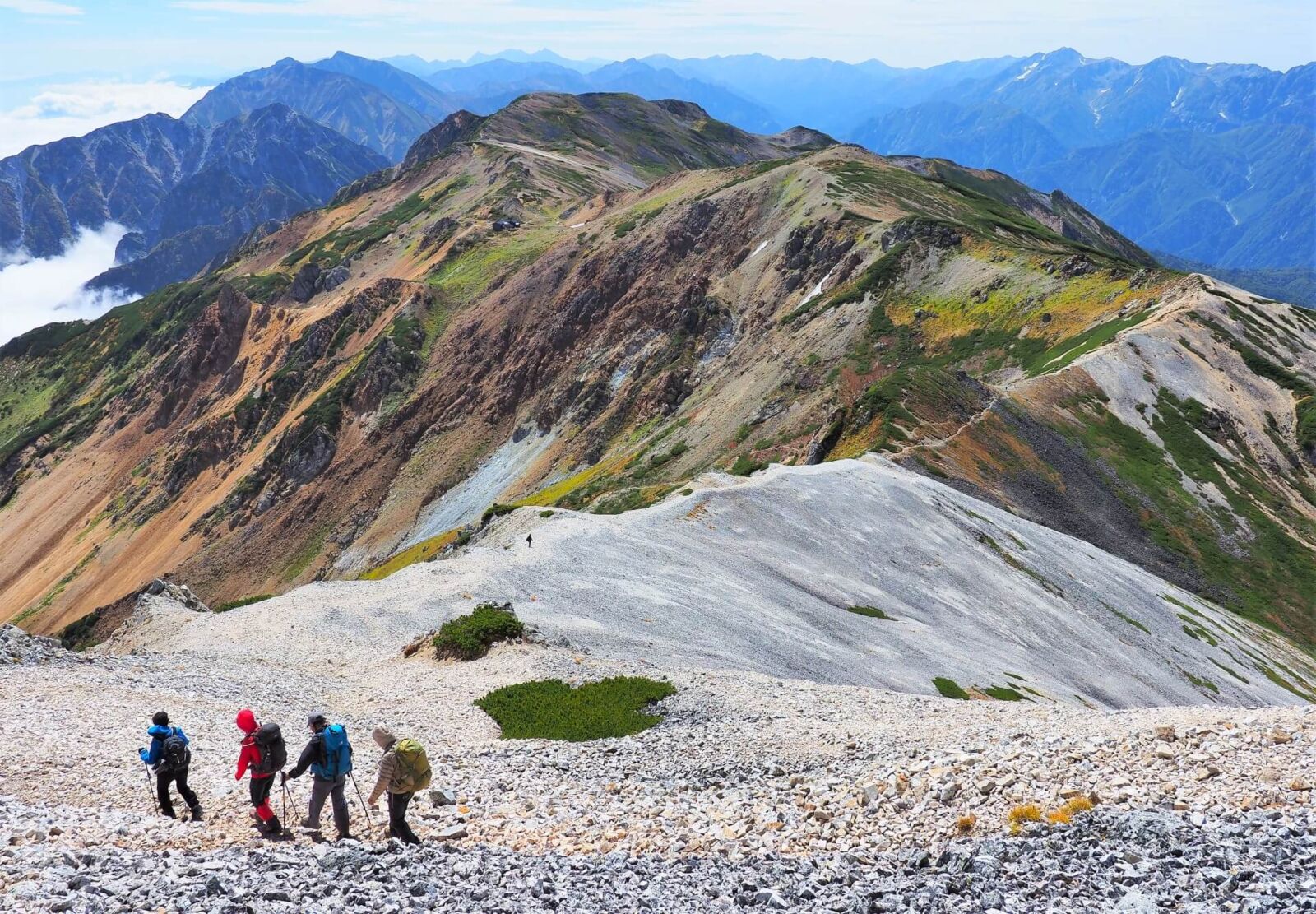
When preparing for any hike in Central Japan, make sure to be adequately prepared for changing weather conditions and know the basics of the trail you will follow. For multi-day treks, you should register your intention to walk and itinerary at the trailhead and check back with them on completion of your walk. For shorter walks this isn’t necessary but make sure to stick to the trail, be appropriately dressed including gear for changing weather conditions, and always carry water, snacks and other essentials with you. A couple of things to be mindful of when it comes to your personal safety while hiking:
Weather: Japan enjoys a generally agreeable climate making it a great country for hiking. Late-June to October is generally considered the best time to hike in alpine areas as the snow will have adequately receded by that time that you can move mostly unimpeded however this time of your also corresponds with Japan’s typhoon season. The equivalent of a cyclone or hurricane, typhoons occur from May to October each year with the peak period typically being August to September. Always check the weather forecast before and during your hike and follow the advice to ensure your safety. The Japan Meteorological Agency (JMA) website provides an Extreme Weather Information advisory - an excellent resource for up-to-date and real-time information.
Volcanoes: Japan boasts many active volcanoes, several of which including Mount Fuji and Mount Ontake, rank among the most popular hiking destinations in the country. When planning your visit to these or any area nearby an active volcano make sure to check the latest activity updates. The JMA website provides real-time advice and warnings for the entire country.
Wildlife: in terms of wildlife to be aware of, most animals in Japan are placid and unlikely to give you any trouble. The animal to be most aware of is the Asiatic Black Bear which is common throughout the mountains and forests of Central Japan. Typically herbivorous, bears are wary of humans therefore while they are present, you are unlikely to see one. Areas that they frequent are usually well-signed. In those areas don’t keep in your tent and make noise to avoid any chance of surprising a bear. It’s nothing to worry about and certainly shouldn’t stop you from camping. Just be aware that they are there and give them the necessary respect. For more information about the animals you might encounter, see our ‘Wildlife, Bird-Watching, Horse-Riding & Fishing' page.
With that, let’s consider some of the best hiking areas in Central Japan:
Mount Fuji
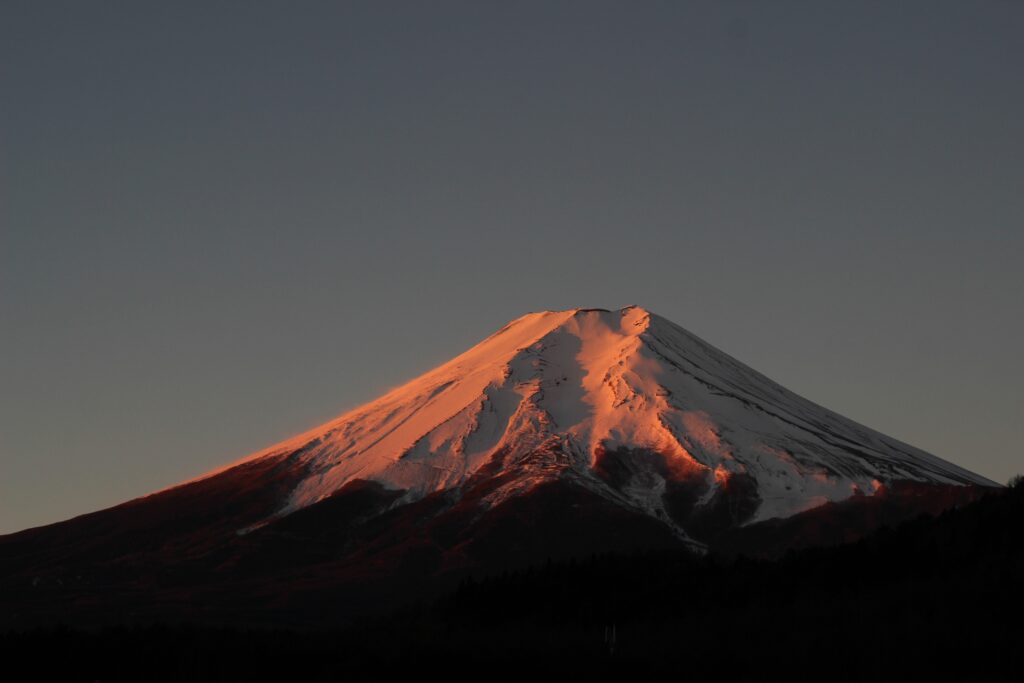
Located in Shizuoka Prefecture, Mount Fuji is Japan’s tallest mountain at 3,776 metres. Much more than a mountain, Fuji is an iconic landscape for Japanese with many regarding it as the spiritual epicentre of the country. An active volcano, Fuji has long been revered, feared, and held in awe by the Japanese people. Without doubt the country’s most iconic and instantly recognisable natural feature, Fuji is much more than just a mountain or volcano. It holds huge spiritual and cultural importance for Japan and rising high above the surrounding plateau is a constant presence in the daily life of the country.
Shiga Kogen


Around 70-minutes from central Nagano City, Shiga Kogen is most famous for its immense ski resort – the largest and highest ski resort in Japan. Outside of winter Shiga is just as enticing. The area lies within Joshinetsu Kogen National Park and smaller UNESCO-recognised Shiga Kogen Highlands. Covering an expansive area, the region boasts multiple mountains including two of Japan’s most active volcanoes, Mount Asama and Mount Kusatsu-Shirane, alpine forests and waterways, and a diverse range of wildlife. Much less developed than Hakuba, Shiga Kogen is an ideal destination for visitors wanting to experience excellent alpine hiking and walking, bird-watching and wildlife, nature and wildlife photography, canyoning, SUP, trail running and more.
Hakuba
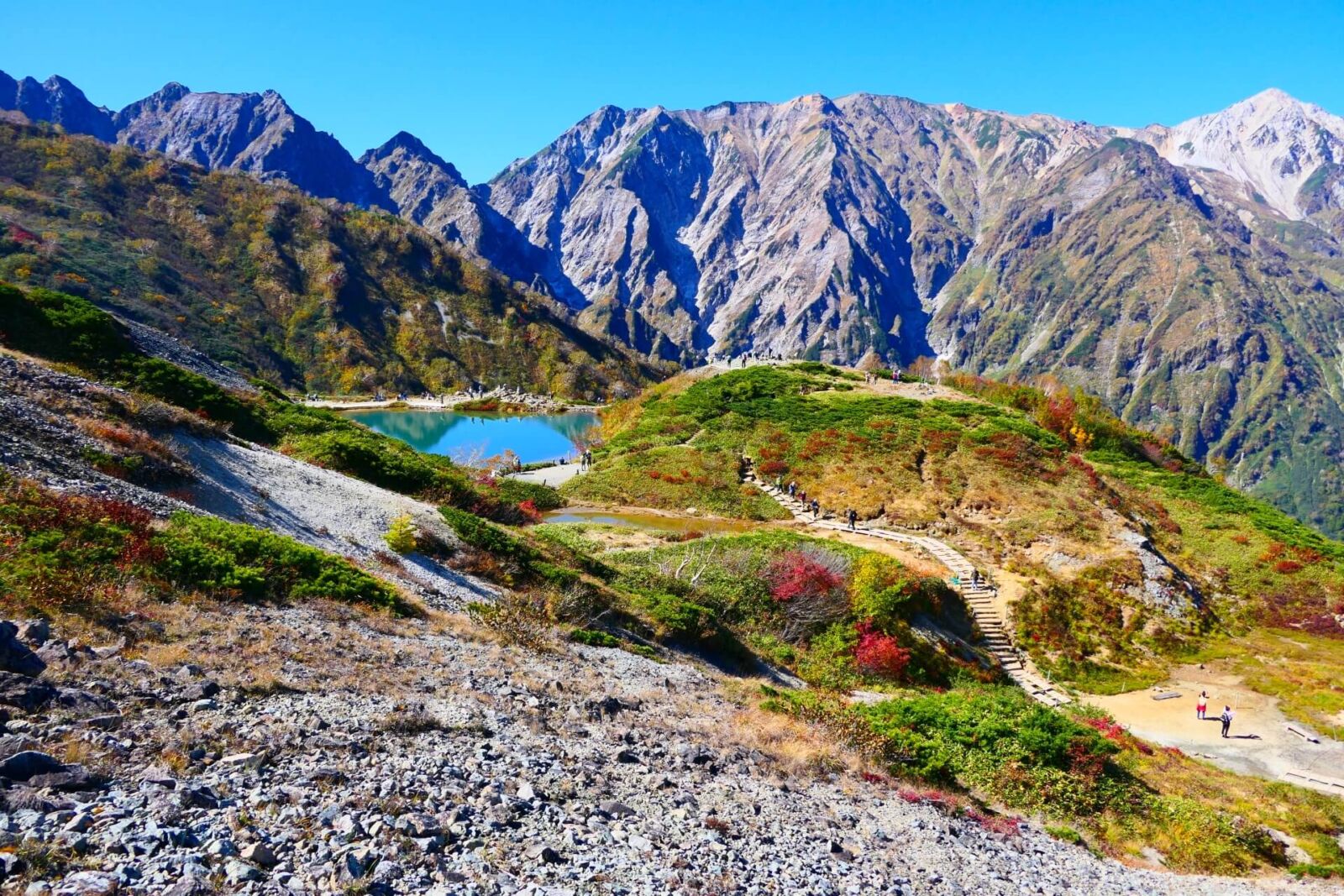
Another area best-known for its ski resorts, Hakuba also boasts some of Japan’s best alpine hiking. Lying in the foothills of Chubu Sangaku National Park – Japan’s fourth largest national park – and the Hida Mountains/North Alps – Japan’s highest mountain range – there are multiple trailheads in Hakuba leading high above. One of the easiest trailheads to reach from Hakuba village, the Mount Shirouma route is always popular. Sitting 2932 metres above sea level, it is the highest mountain in the Hakuba region of the mountain range, and somewhat unique in that it retains areas of snow throughout the year including the spectacular Hakuba Daisekkei. Multiple gondolas and ropeways also operate throughout the green season providing access to some truly fantastic trails ranging from an hour or two, to more intensive multi-day trekking deep into the national park with routes connecting to Kamikochi, Mount Tate, Mount Norikura and more.
Kamikochi
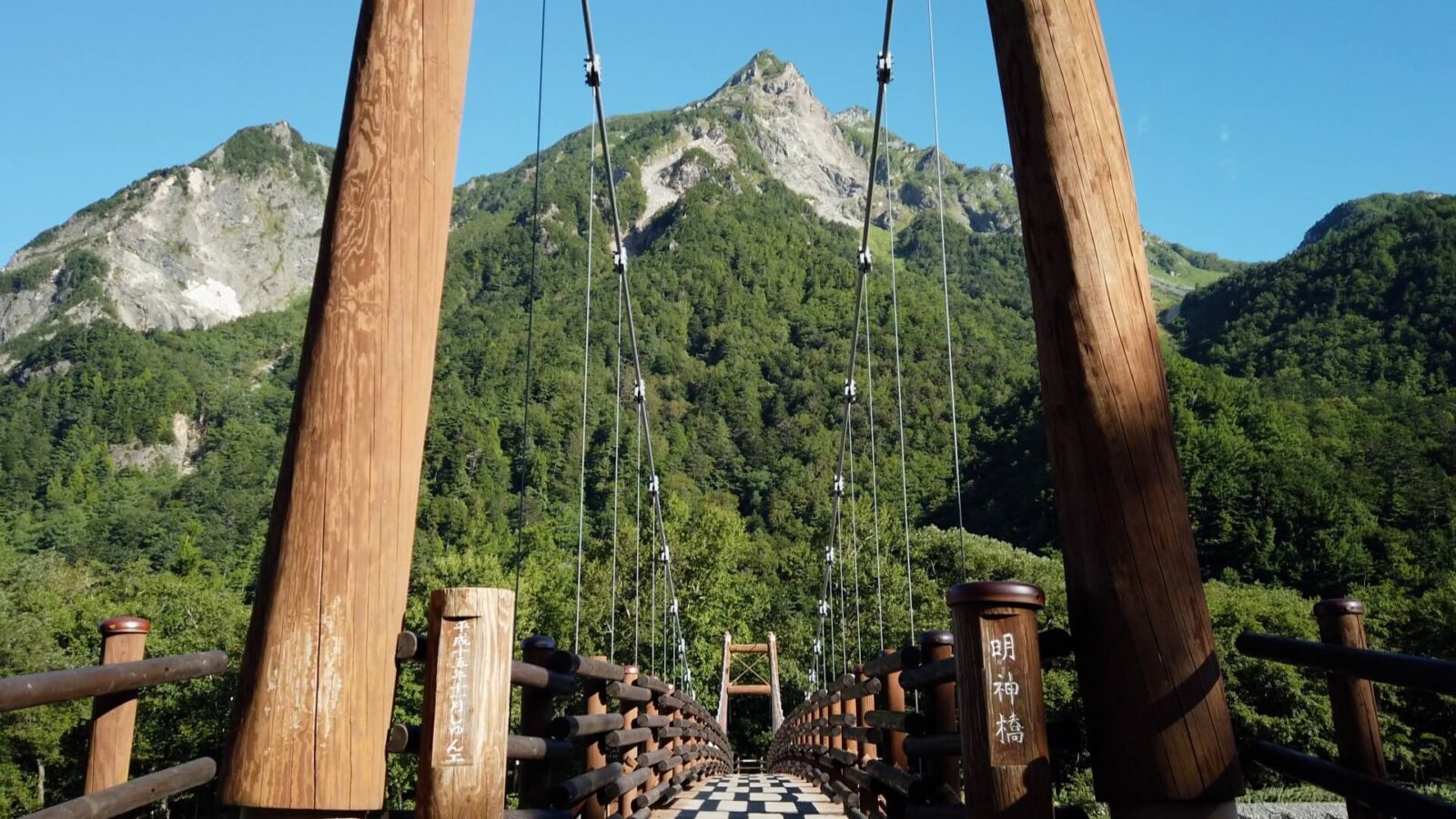
Considered the jewel of the Chubu Sangaku National Park, the alpine valley of Kamikochi sits between 1400 to 1600 metres above sea level and in the shadow of Japan’s third tallest mountain, Mount Hotaka. Rising well-over 3000 metres above sea level, trails leading to the triple-peaked Hotaka rank among the most popular in Central Japan while in the valley below, more leisurely circuits follow the beautiful Azusa River and are suitable to anyone of reasonable fitness. Kamikochi is open to the public from mid-April late-November.
Best Selling
1-Day Tour from Nagano and Matsumoto: Kamikochi & Matsumoto Castle
- Spots:
- Pick-up:
- Drop-off:
Mount Norikura
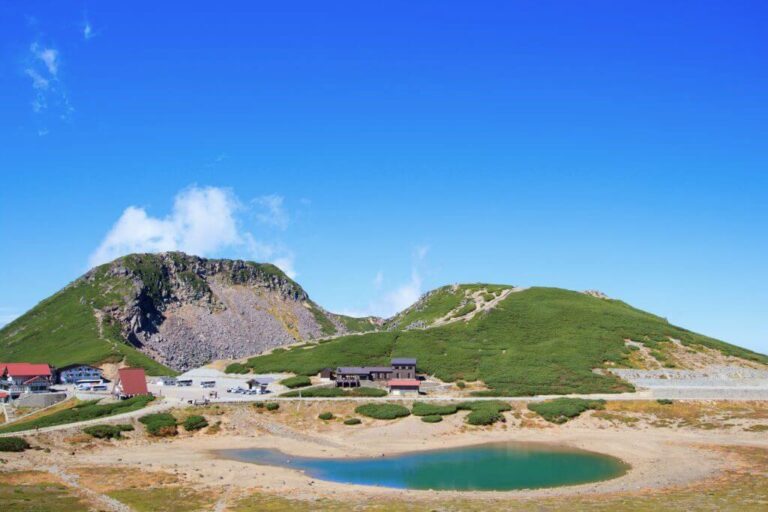
Within easy reach of Kamikochi, Mount Norikura – or Norikuradake – stands at 3026 metres above sea level yet offers comfortable and leisurely walking trails for anyone of reasonable fitness. From late-spring through to summer the receding snow then reveals a beautiful landscape of walking trails surrounded by lush alpine meadows and flowers. Norikura is known of its beauty, fantastic mountain vistas and snow corridor in spring and early summer. The mountain trails are directly accessible from Norikura Kogen – a highland resort town located a little lower down. Trails spanning-out from Norikura take visitors through verdant forests and onto rushing rivers and waterfalls.
Mount Tate & the Tateyama-Kurobe Alpine Route
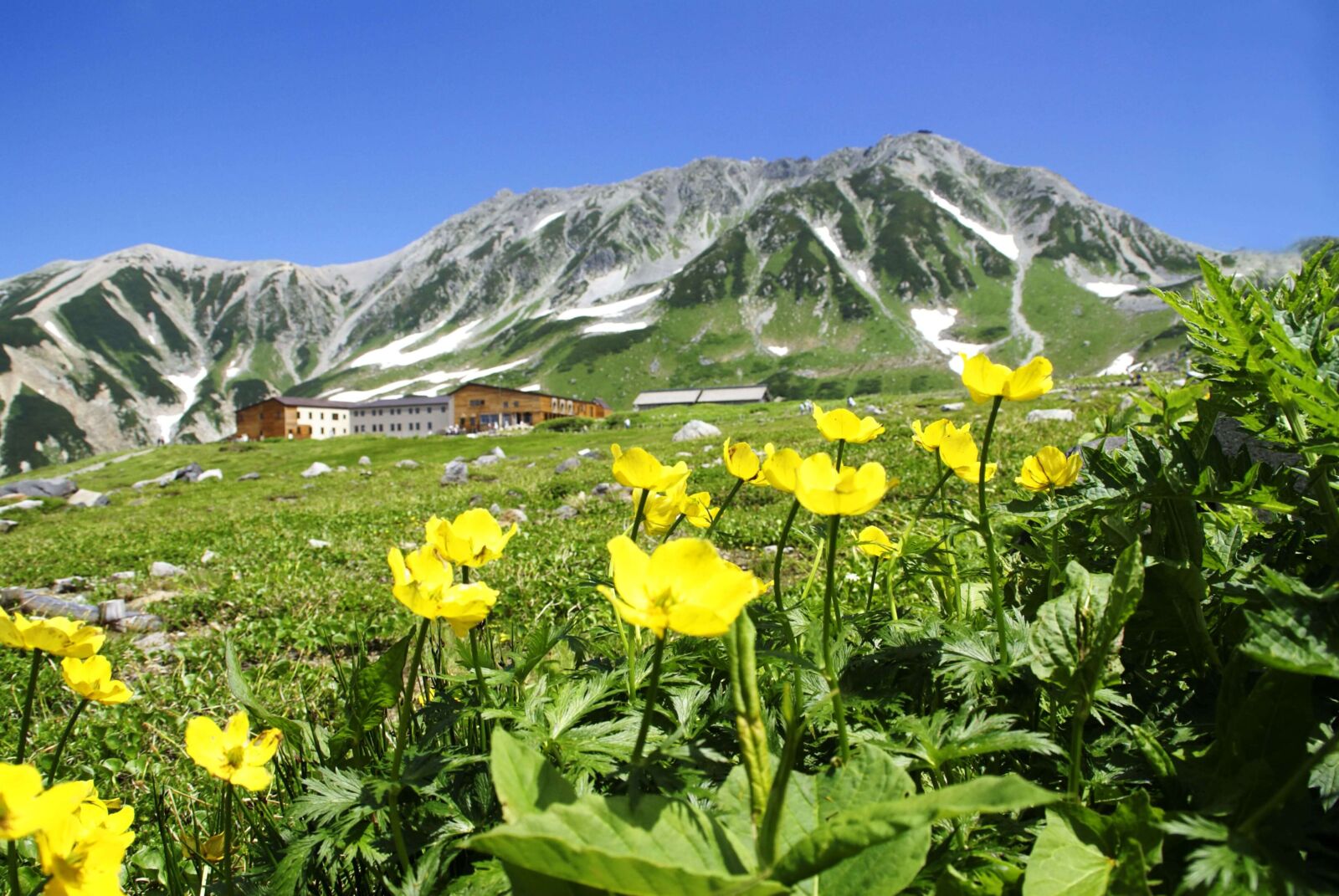

Another highlight of the Chubu Sangaku National Park, Mount Tate is considered one of Japan’s three most sacred mountains – along with Mount Fuji and Mount Haku. Accessible via the Tateyama-Kurobe Alpine Route from Nagano or Toyama, this is one of Japan’s most dramatic and sacred landscapes. The summit of Mount Tate can be reached using hiking trails that open as the snow recedes in July, welcoming visitors onto another of Japan’s most sacred mountains – a place where heaven and hell have long been considered to coexist. For avid hikers, the one-week trail leading from Mount Tate to Kamikochi rates among the most famous and spectacular in Japan.
[Summer/Autumn only] Tateyama-Kurobe Tour: Walking on the 'Roof of Japan'
- Spots:
- Pick-up:
- Drop-off:
Mount Ontake & the Kiso Valley
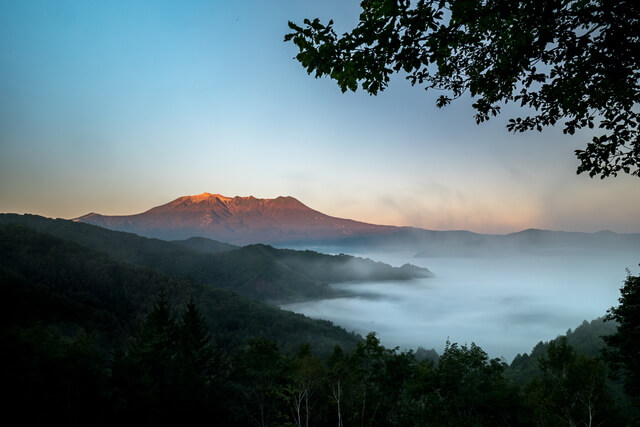
Lying to the south of Chubu Sangaku National Park and between Nagoya and Matsumoto, the Kiso Valley is a beautiful region of azure rivers, waterfalls and lush forests around Japan’s second highest volcano, Mount Ontake. Ontake itself is considered sacred by practitioners of ‘Ontake Shinto’ with the region home to the pilgrimage trails of the ‘Ontake Kodo’. Largely unknown to international visitors, the Ontake Kodo is slowly gaining recognition outside of Japan following the World Heritage-listing of the ‘Kumano Kodo’ trails on the Kii Peninsula – see below for more information.
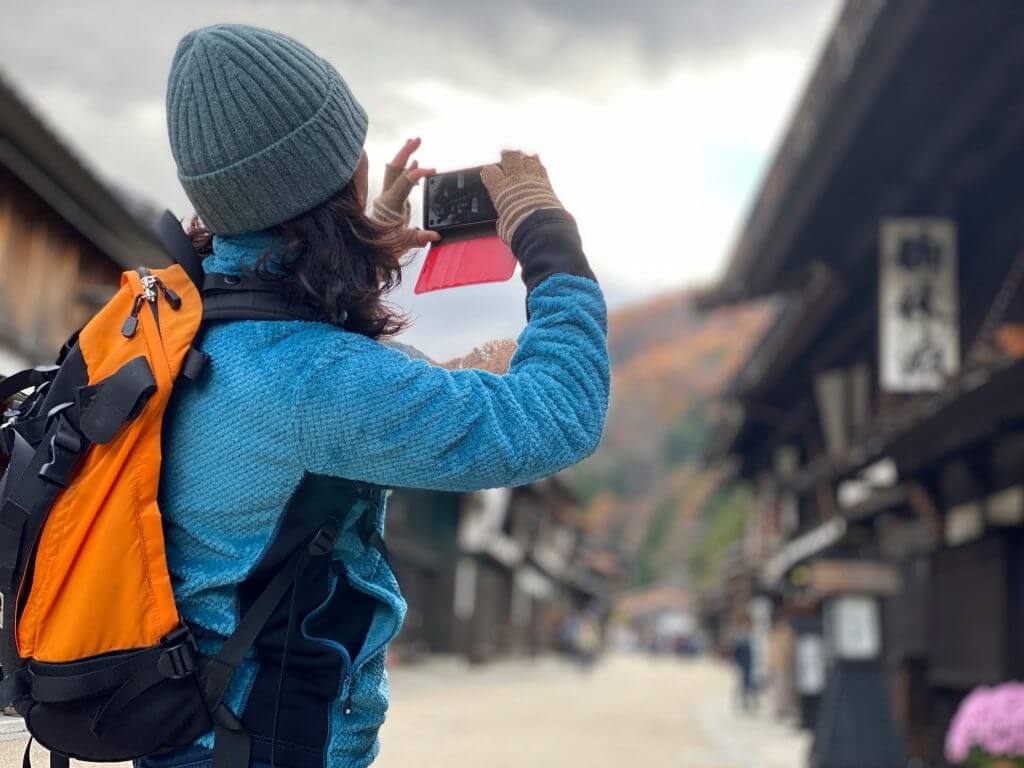
For international visitors, the area is best known for the historic Nakasendo that passes through the valley. One of five major routes connecting Tokyo – then called ‘Edo’ – and Kyoto during the Edo Period (1603-1868), much of the Nakasendo can still be walked today. Translating as ‘road through the mountains’, the Nakasendo was used by all manner of people including dignitaries and their families as they travelled to and from the two centres of power, merchants, ascetics and many others. The section of the trail through Kiso Valley - the 'Kiso-ji' - is regard as the most beautiful and boasts the best preserved historic towns of Narai, Magone and Tsumago that act as way-stations along the trail.
Mount Haku
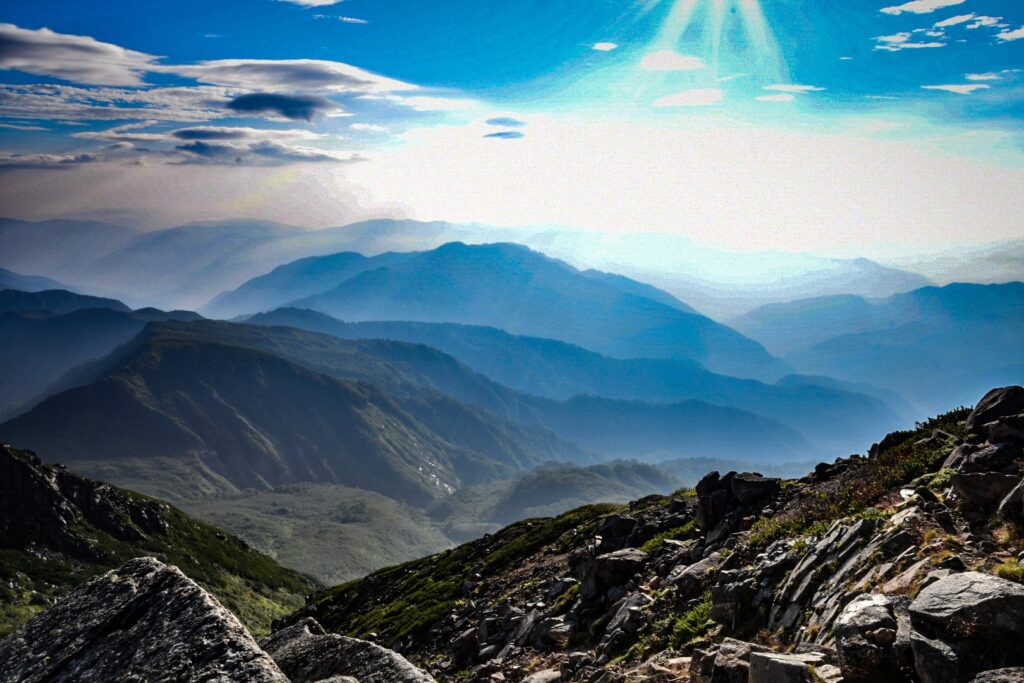
The third of Japan’s three sacred mountains, Mount Haku or ‘Hakusan’ stands 2,702 metres above sea level and is the focal point of Hakusan National Park. The park extends across four prefectures – Ishikawa, Fukui, Gifu and Toyama – and is accessible from Kanazawa in around 60 minutes (by car). Buried in deep snow through winter, the trails of Hakusan can be hiked from-late spring until autumn, allowing visitors the chance to enjoy another of Japan’s most beautiful and spiritually significant landscapes.
Kii Peninsula
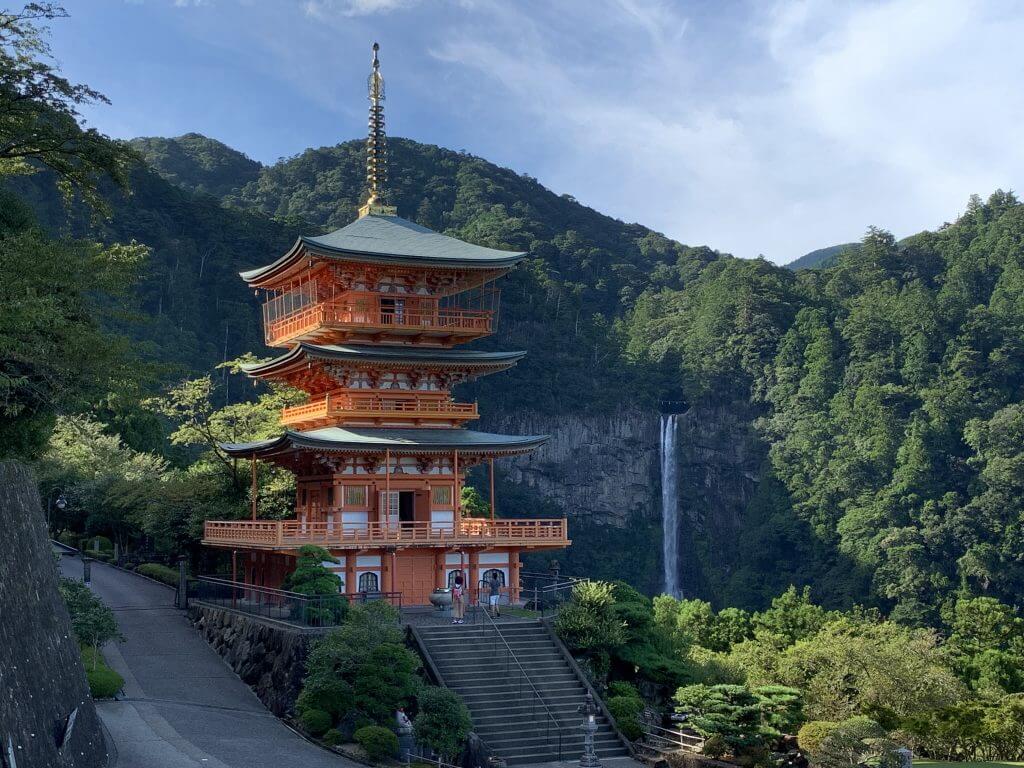
Lying several hours to the west of Nagoya, the Kii Peninsula lies just outside of Central Japan in Mie, Wakayama and Nara Prefectures. So why do we mention it? Readily accessible from Nagoya – the largest city in Central Japan – the region boasts many of Japan’s most important Shinto and Buddhist destinations and should not be overlooked starting with the World Heritage-listed Kumano Kodo. For more than 1000 years, the pilgrimage trails of the Kumano Kodo have been walked by monks, pilgrims, aristocracy and lay-people between sacred sites and temples on the Kii Peninsula. As one of only two pilgrimage routes in the world to have World Heritage-listing – along with the Camino de Santiago in Spain – walking the Kumano Kodo is one of Japan’s most rewarding and memorable experiences.
2 / RECOMMENDED HIKING TRAILS IN CENTRAL JAPAN
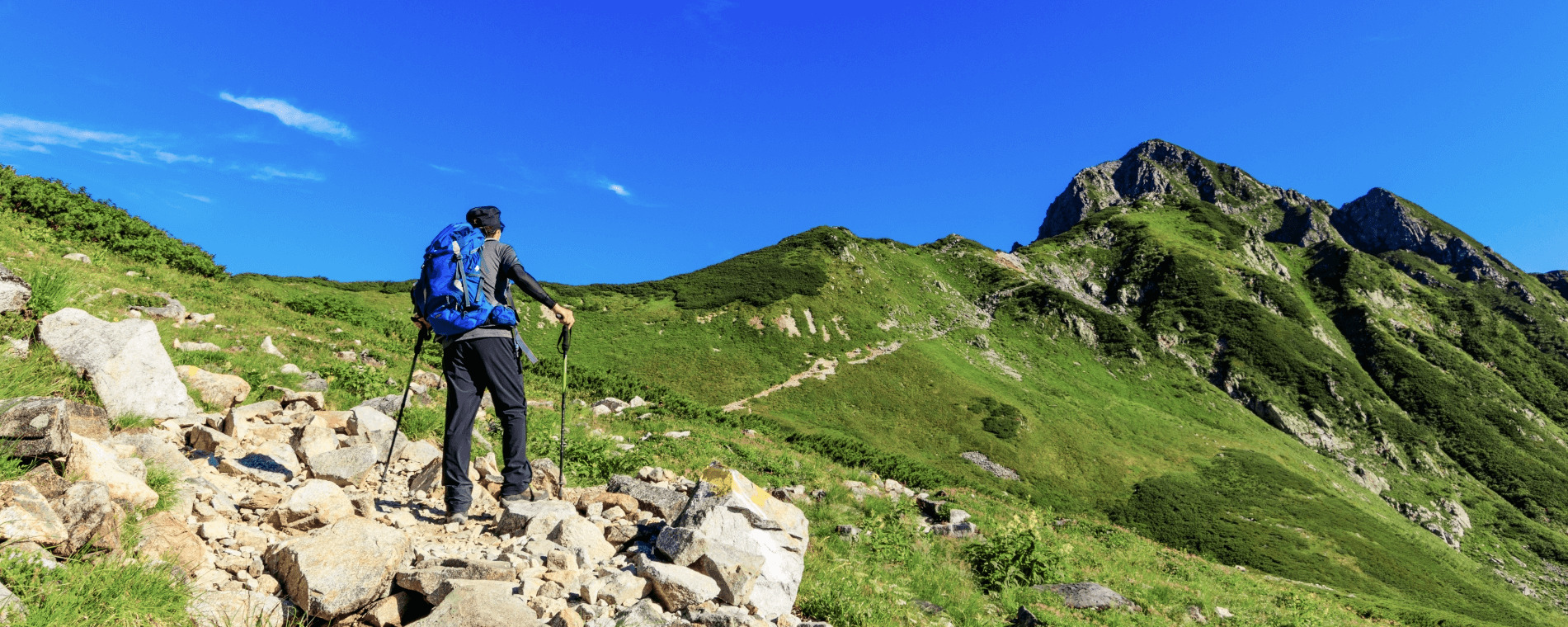
Home to the majority of Japan’s tallest mountains and expansive national parks, Central Japan is blessed with seemingly endless trail ranging in duration, character and level of experienced required. Among them, Japan has a rich history of Shinto and Buddhist pilgrimage trails along with important historic trails that traverse some of the country’s most beautiful landscapes, making them enjoyable for both their natural beauty and cultural significance.
North Alps Trails / Hakuba & Azumino
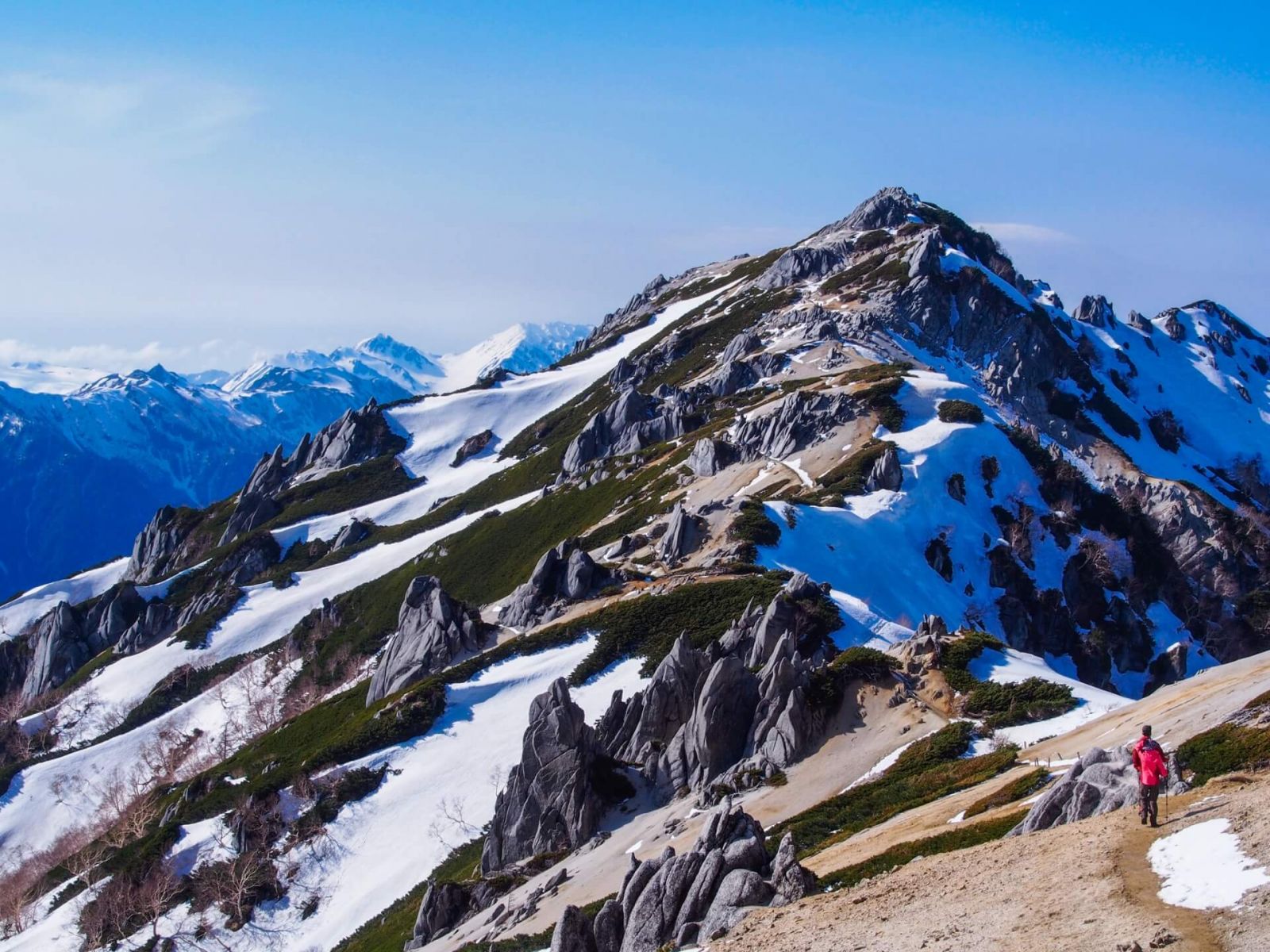
The Hida Mountains or ‘North Alps’ is Japan’s highest mountain range covering a vast area that straddles multiple prefectures including Nagano, Toyama and Gifu. There are countless trails leading through the mountains with trailheads in many areas however several of the easiest trailheads are located in Hakuba and nearby Azumino – within easy reach of visitors coming from Tokyo. For more information, see our ‘Hike Japan’s North Alps Mountain Trails’ page.
Mount Hikarujoyama - Mount Nagamine Trail / Azumino
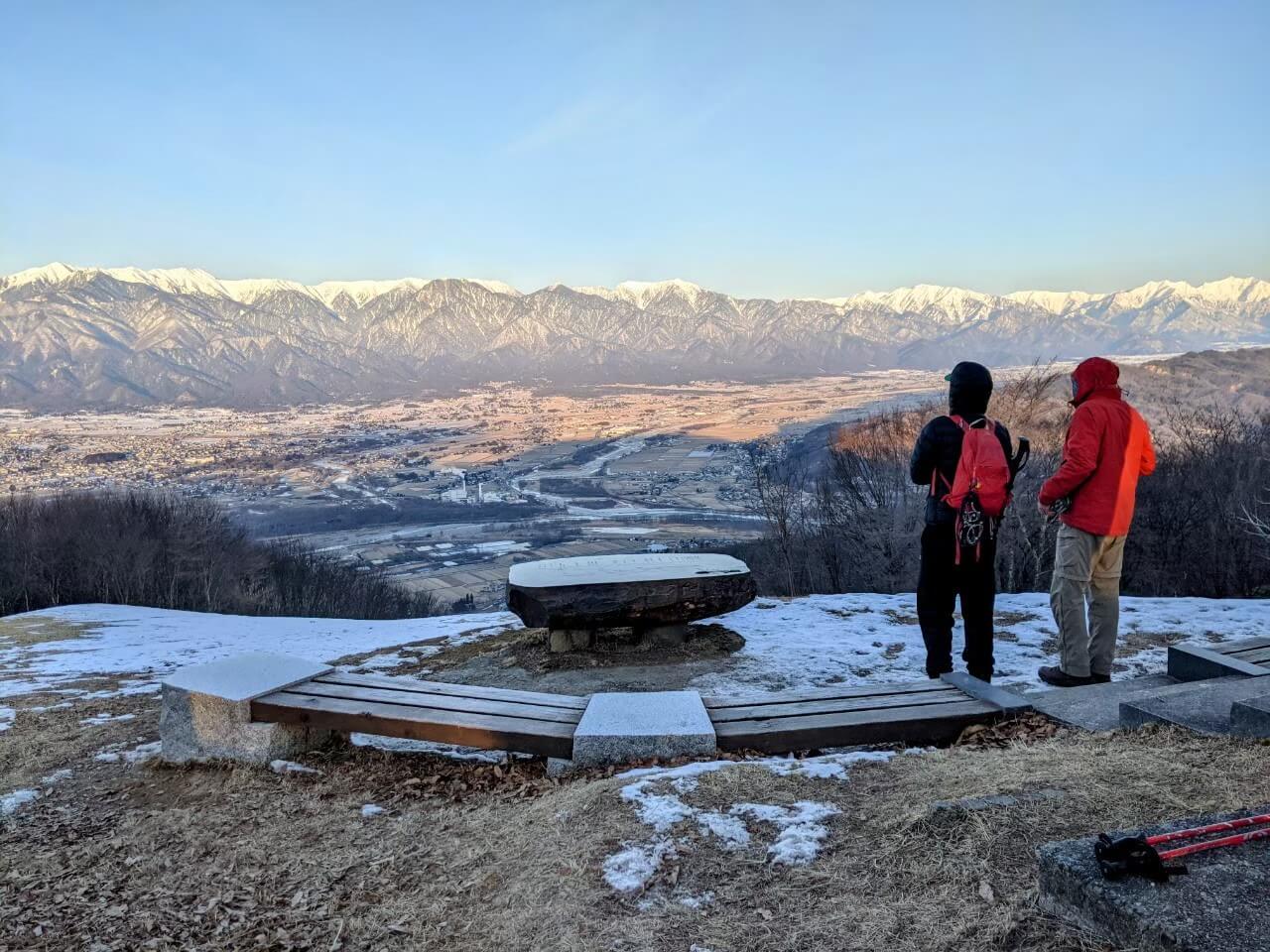
For visitors in the Azumino area in winter (or if you're after a brisk morning walk / mini-hike anytime to year), following the trail from the Mount Hikarujoyama trailhead to the Mount Nagamine viewpoint, allows you to take in the mountains of the North Alps. From the viewpoint you can enjoy an expansive panoramic view of the mountain range, which is at its best in winter, when the rising sun reflects-off the snow-capped mountains, creating what the locals call the 'morning glow'. It's an easy 1.5 hour walk in each direction but it can be steep in places so if you're attempting it in winter, make sure to take walking poles, crampons and a headlamp (if you want to catch the sunrise.
Nakasendo Trail / Kiso Valley
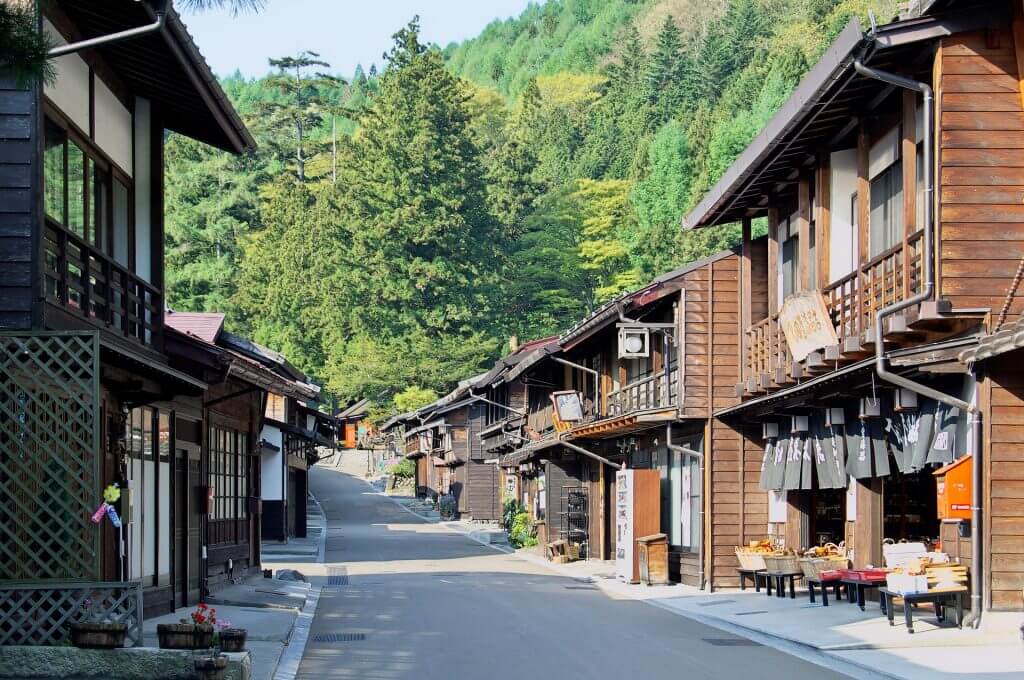
One of five major routes connecting Tokyo – then called ‘Edo’ – and Kyoto during the Edo Period (1603-1868), much of the Nakasendo can still be walked today. Translating as ‘road through the mountains’, the Nakasendo was used by all manner of people including dignitaries and their families as they travelled to and from the two centres of power, merchants, ascetics and many others. Over the total expanse of the route, sixty-nine ‘juku’ or ‘postal towns’ developed to monitor and control movement along the road, tax it and provide services including accommodation. Today, several towns including Narai-juku, Magome-juku and Tsumago-juku in the Kiso Valley remain in an excellent state of preservation. Lying in perhaps the most beautiful section of the Nakasendo, walking the historic ancient takes you deep into Japan as you move through both time and space. For more information see our ‘Walk the Nakasendo Trail’ page.
1-Day Tour from Nagano and Matsumoto: Step into the Past on the Nakasendo
- Spots:
- Pick-up:
- Drop-off:
Ontake Kodo / Kiso Valley
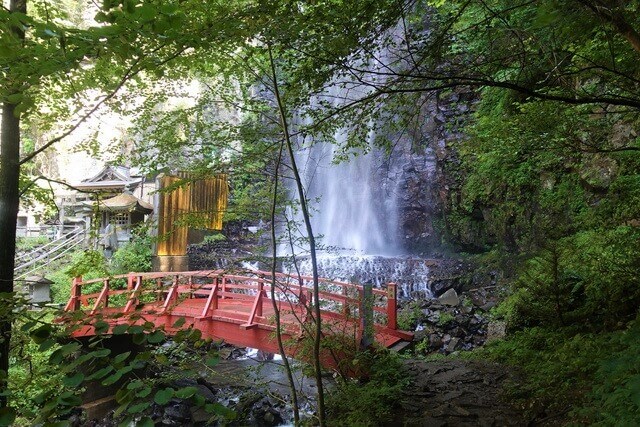
Lying to the south of Chubu Sangaku National Park and between Nagoya and Matsumoto, the Kiso Valley is a beautiful region of azure rivers, waterfalls and lush forests around Japan’s second highest volcano, Mount Ontake. Ontake itself is considered sacred by practitioners of ‘Ontake Shinto’ with the region home to the pilgrimage trails of the ‘Ontake Kodo’. Largely unknown to international visitors, the Ontake Kodo is slowly gaining recognition outside of Japan following the World Heritage-listing of the ‘Kumano Kodo’ trails on the Kii Peninsula. For travelers looking to experience the Ontake Kodo with an experienced local guide, the Mount Ontake Kodo Nature Worship Tour and Mount Ontake Ropeway & Forest Hiking Tour operate to and from nearby Kiso-Fukushima Station.
Togakushi Kodo / Togakushi
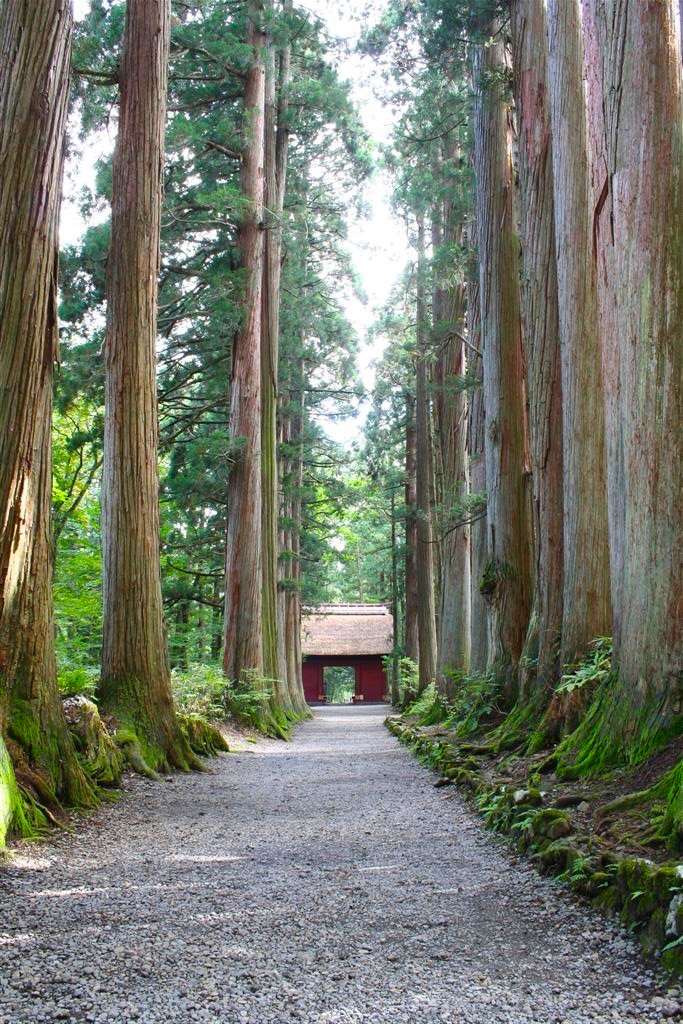

Home to some of Japan’s most important Shinto shrines, trails crisscross the forests of Togakushi between the shrines and lead as far as Zenko-ji Temple in Nagano City. In doing so, the Togakushi Kodo connects two of Japan’s most important Shinto and Buddhist points of pilgrimage in a spiritual route that largely flies under the radar. Especially beautiful through October and November when the forests of Togakushi are awash with colour, enjoying the leisurely Togakushi Kodo is a chance to walk a historic and spiritual path with few other people. For more information, see our ‘Togakushi’ page.
1-Day Togakushi Legends Tour: Hands-on Soba Noodles, Ninja Village, and Hidden Shrines
- Spots:
- Pick-up:
- Drop-off:
Yoshida Trail / Mount Fuji
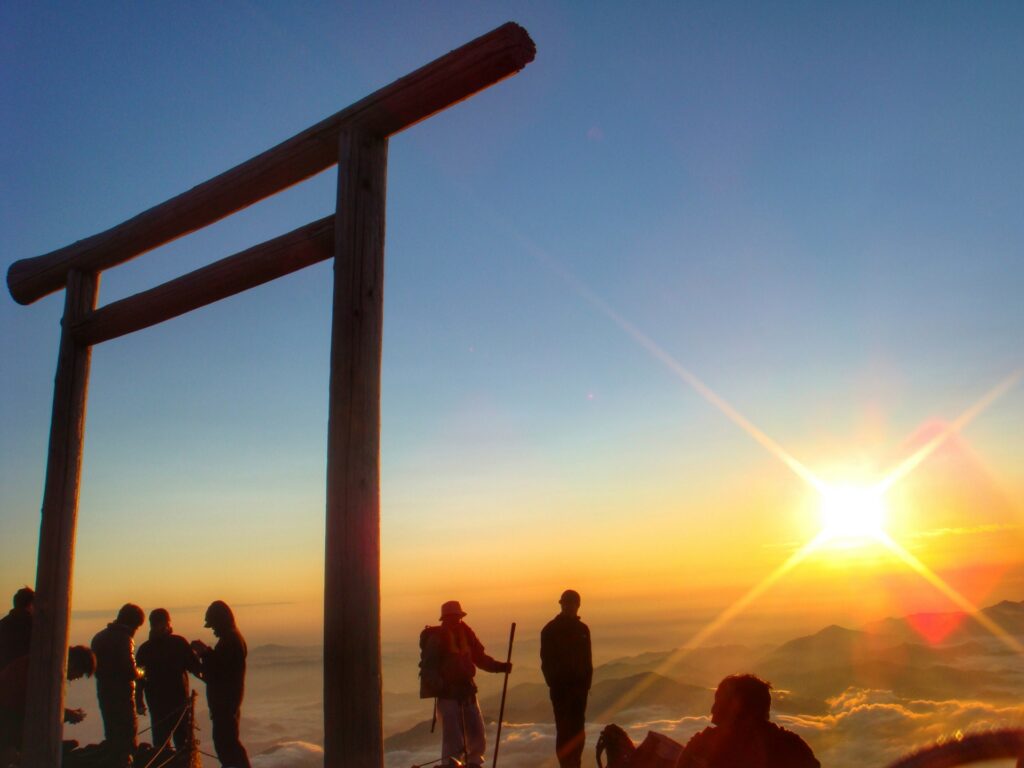
As Japan’s tallest mountain and volcano, Mount Fuji occupies a space at the heart of Japanese culture and history. The brooding volcano stands 3,776 metres tall and is the country’s most iconic sight – a beacon 2-hours outside of Tokyo drawing people into the alpine heartland of Central Japan. Fuji’s official climbing season runs from early-July until mid-September, during which time, all trails and mountain facilities are open. Weather is typically mild and this time and snow will be gone from the mountain. Visitors have the option of summitting Fuji via different trails, the most popular of which is the Yoshida Trail. Open from early-July until mid-September, expect the Yoshida Trail to be busy, especially on weekends. Alternatively, the Subashiri, Gotemba and Fujinomiya Trails are open from mid-July until mid-September and while also popular, are less busy than the Yoshida Trail.
Kumano Kodo / Kii Peninsula
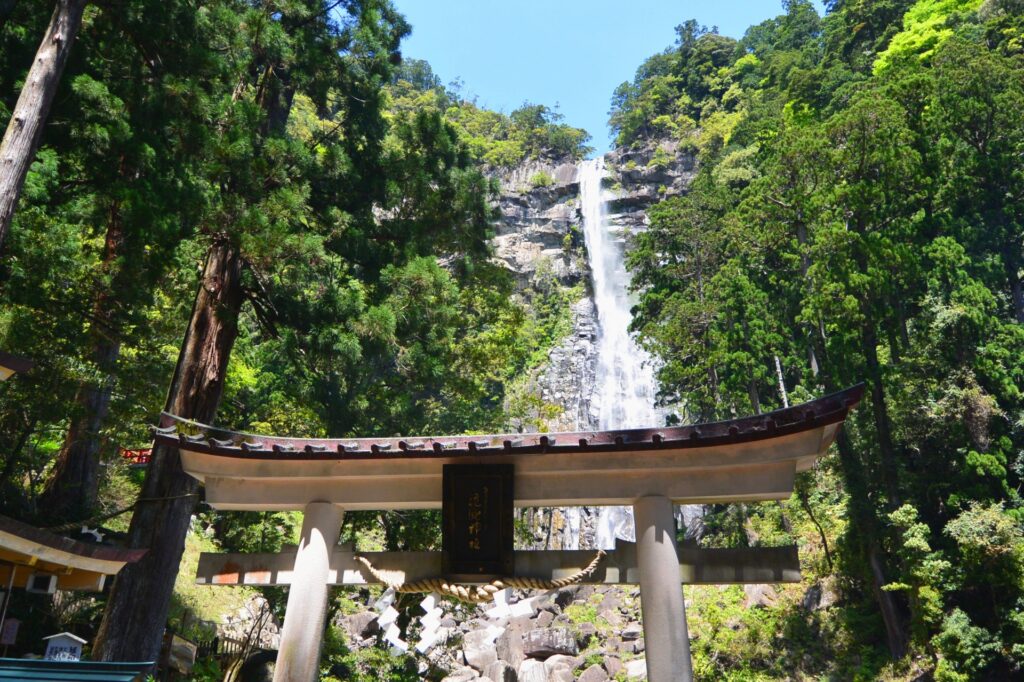
For more than 1000 years, the pilgrimage trails of the Kumano Kodo have been walked by monks, pilgrims, aristocracy and lay-people between sacred sites and temples on the Kii Peninsula. As one of only two pilgrimage routes in the world to have World Heritage-listing – along with the Camino de Santiago in Spain – walking the Kumano Kodo is one of Japan’s most rewarding and memorable experiences. Walks vary greatly in length ranging from leisurely walks of an hour or two to multiday hikes between the famous sites. The Nakahechi is one of the most popular routes. Stretching 30km from Tanabe on the west coast, this is a comfortable two-day walk – requiring an overnight stay in Chikatsuya Oji – which ends at the Kumano Hongu Taisha, one of the Kumano Grand Shrines. For more information, see our ‘Walk the Kumano Kodo Trail’ page.
3 / TREKKING & MOUNTAINEERING inc. CAVING & ROCK-CLIMBING
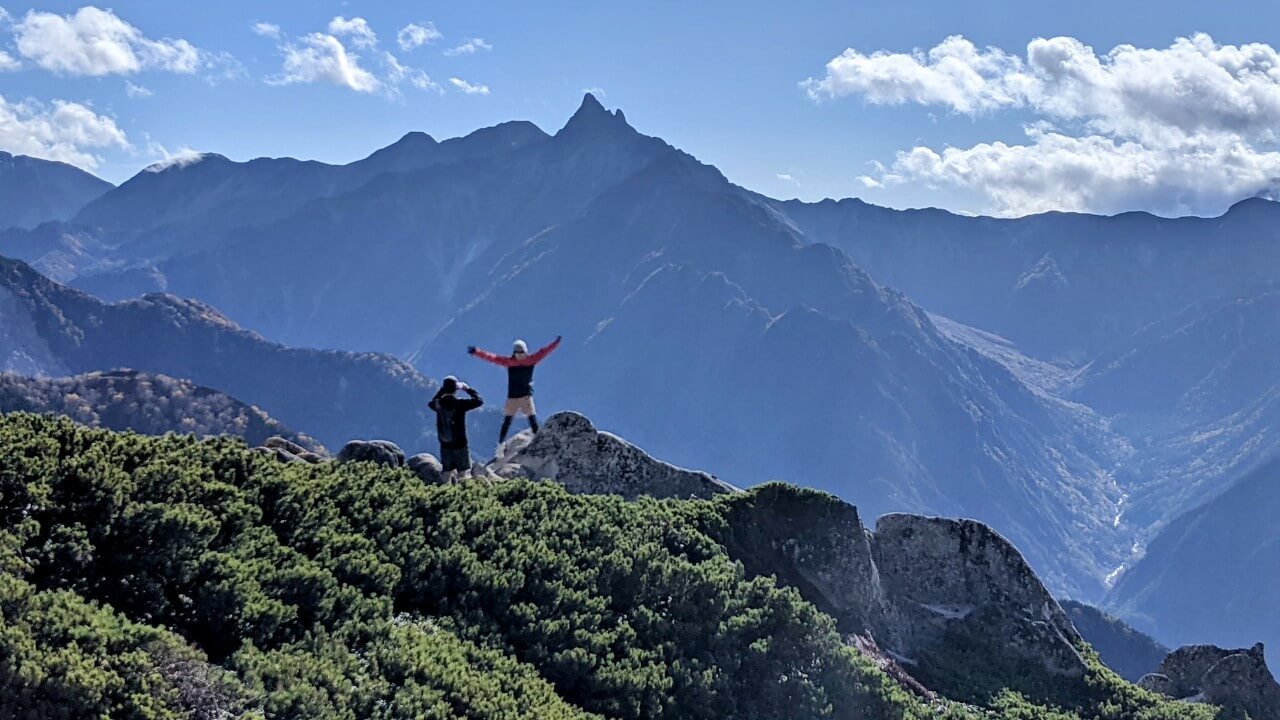
For avid hikers, engaging in a multiday trek through the mountains is one of Japan’s most rewarding experiences. Requiring fitness, expertise and adequate preparation, these treks require combine hiking with the varied skills of mountaineering in order to access the highest and most difficult areas of the mountains including in winter.
Trekking & Mountaineering
Also called ‘alpinism’, mountaineering combines hiking, climbing, skiing and traversing alpine landscapes at any time of year including in the snow of winter. Unlike hiking which can be enjoyed by almost anyone, mountaineering typically requires a high degree of skill and specialist equipment and an element of risk and should only be undertaken with adequate expertise and in partnership with other experienced climbers and/or a guide.
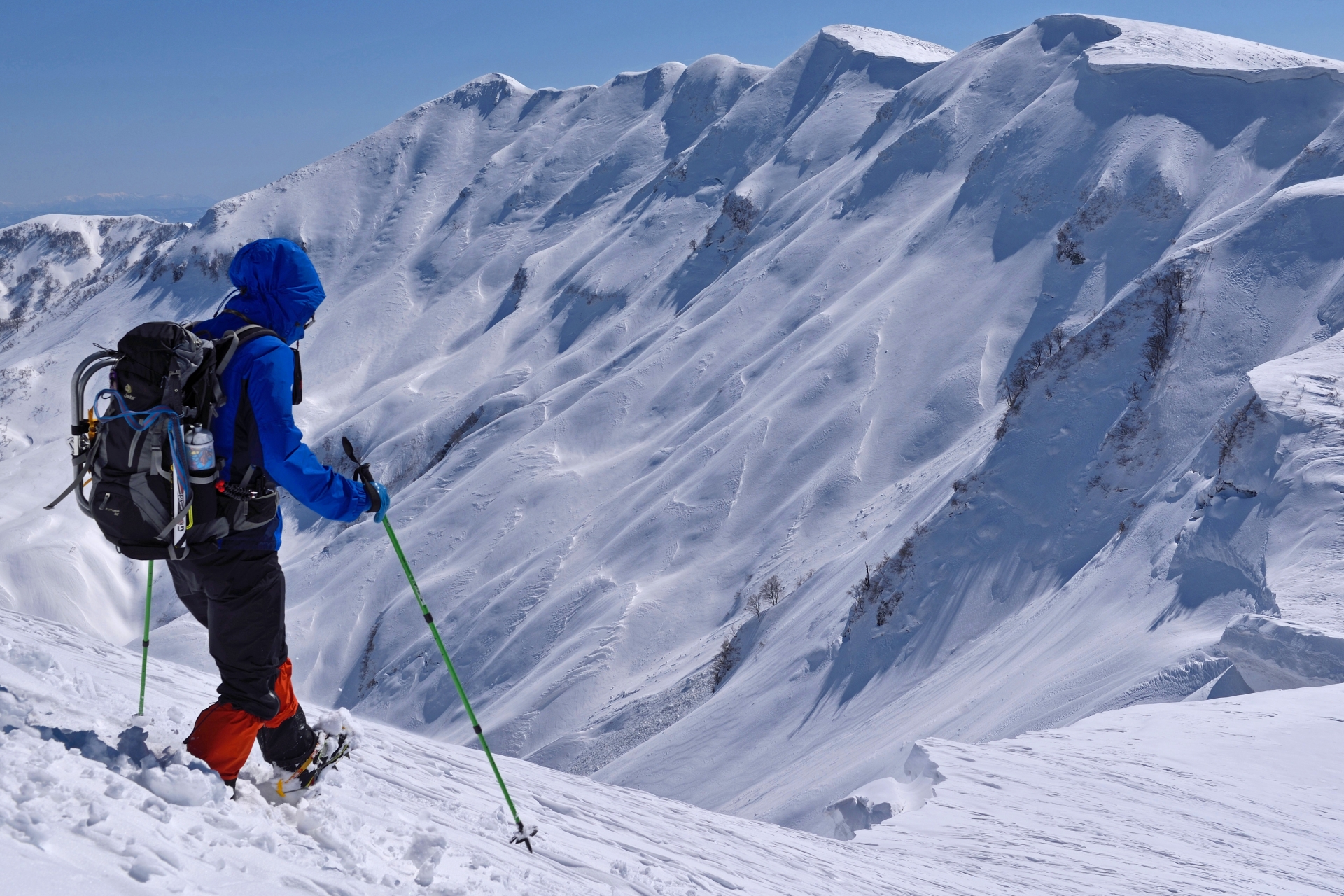
Mountaineering opens-up multi-day treks requires hikers and climbers to carry all their gear, food and water with them and spend nights high in the mountains, camping or in mountain huts. Needless to say, home to the majority of Japan’s tallest mountains, our home of Central Japan is the premier mountaineering destination in the country.
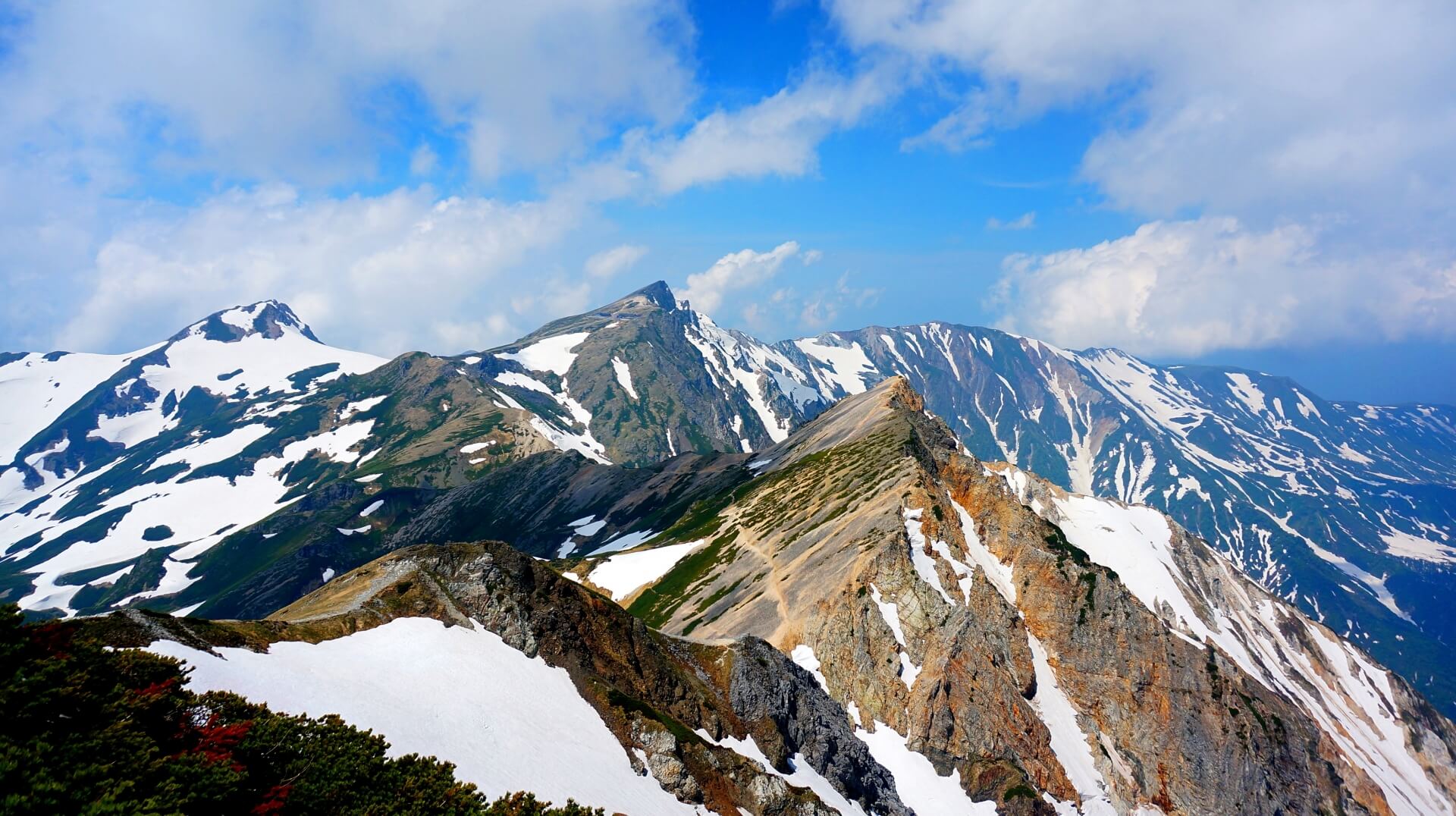
For visitors looking for the heightened challenge of multiple trekking and mountaineering in Central Japan, we recommended heading to the North Alps - an area made-up of the Hida Mountains and Chubu Sangaku National Park. Often referred to as the ‘North Alps’, this is Japan’s highest mountain range with multiple peaks over 2500 metres and rising above 3000 metres. Our ‘Hike Japan’s North Alps Mountain Trails’ page is a great place to start when planning your multi-day hike deep into the very heart of the country.
Caving
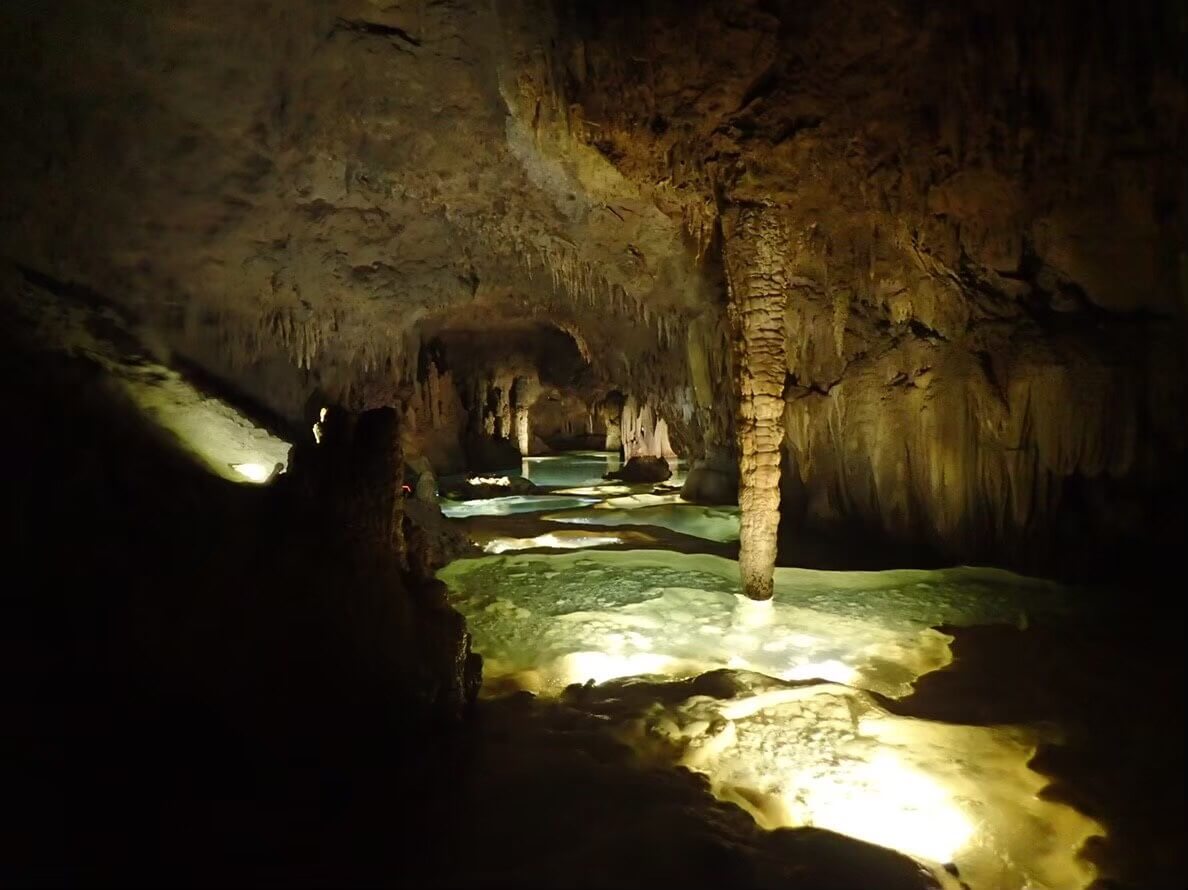
Commonly referred to as ‘spelunking’ or ‘potholing’, caving is – as the name suggests – the activity of exploring caves. While Japan doesn’t have a big reputation for caving, it is home to some marvellous caves and with the sport gaining popularity, expect more to be discovered.
1-Day Tour from Takayama: Hida's Hidden Gems - Hida Folk Village, Limestone Caves and the Shinhotaka Ropeway
- Spots:
- Pick-up:
- Drop-off:
Rock Climbing
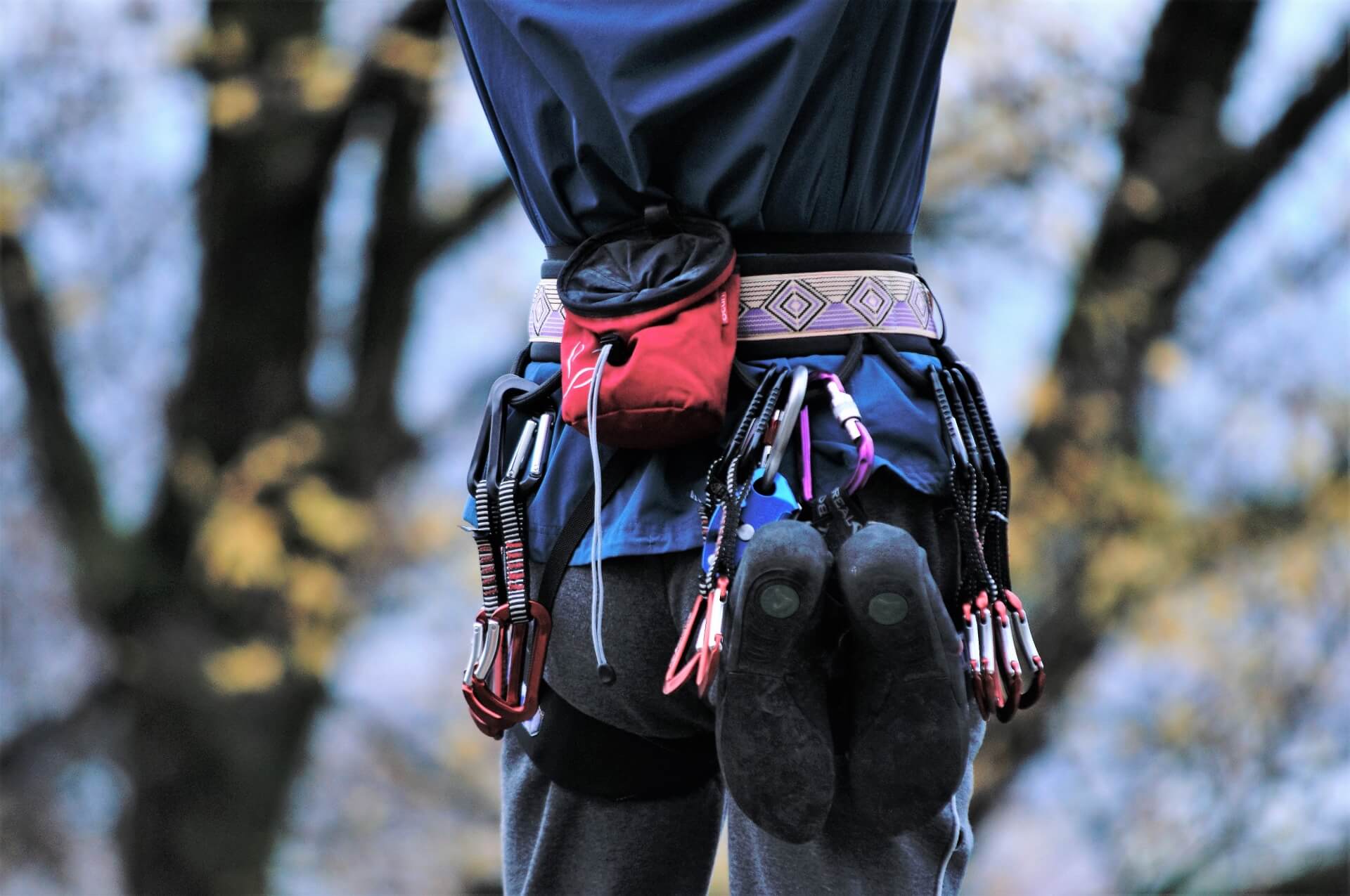
Climbing is an established and popular sport in Japan and with an estimated seventy percent of the land mass considered mountainous, it’s no surprise that there are plenty of rock faces waiting to be conquered. With most of Japan’s highest mountains found in the Japan Alps of Central Japan, it’s no surprise that the region is home to many of the best rock faces in the country.
We apologise that at this time we do not have any climbing activities to offer however we hope to update this information shortly.
4 / POPULAR OUTDOOR STORES IN JAPAN
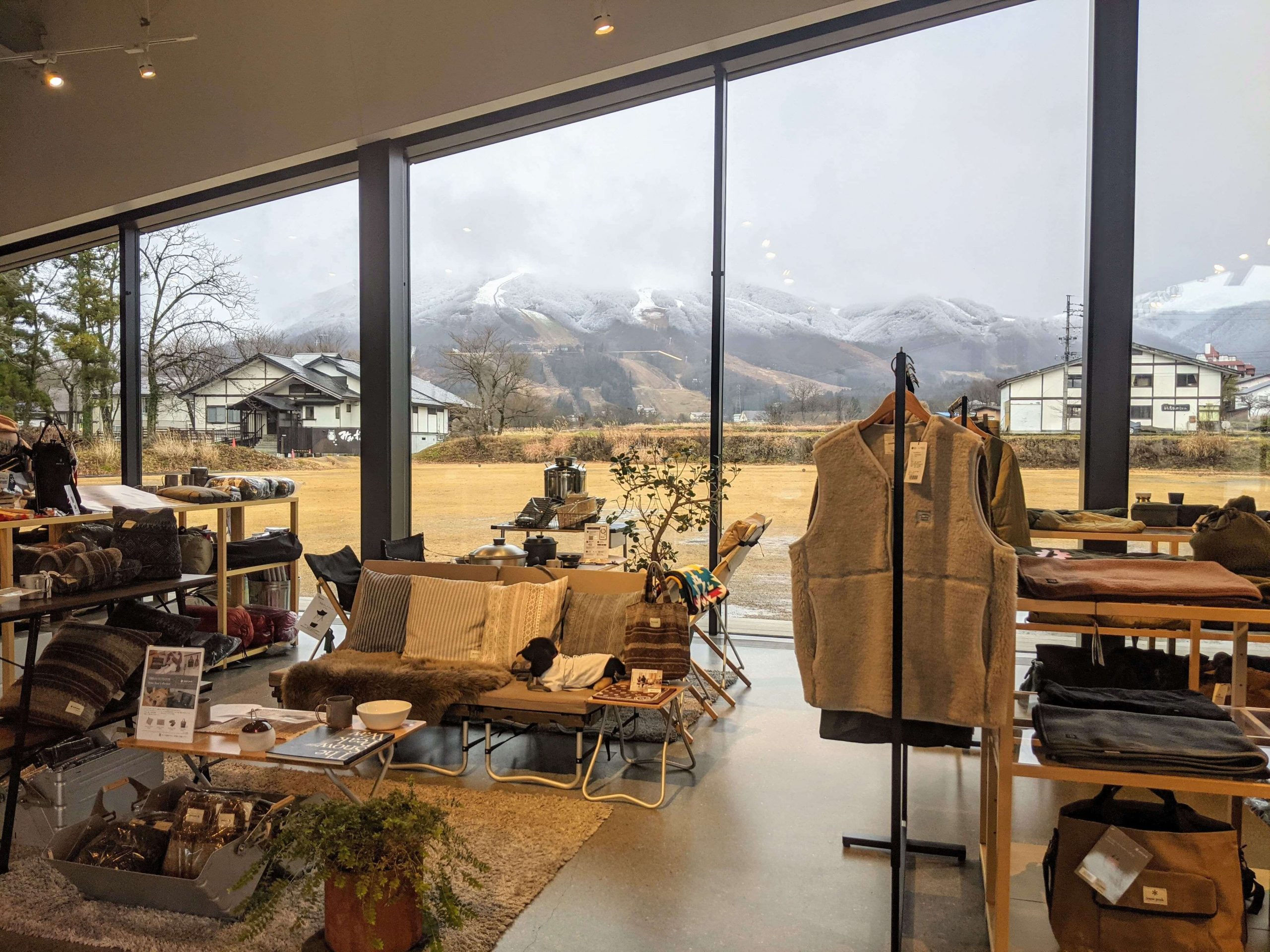
For international visitors not wanting to carry everything with them, Japan has some excellent outdoor stores including Snow Peak, Montbell, North Face and Colemman.
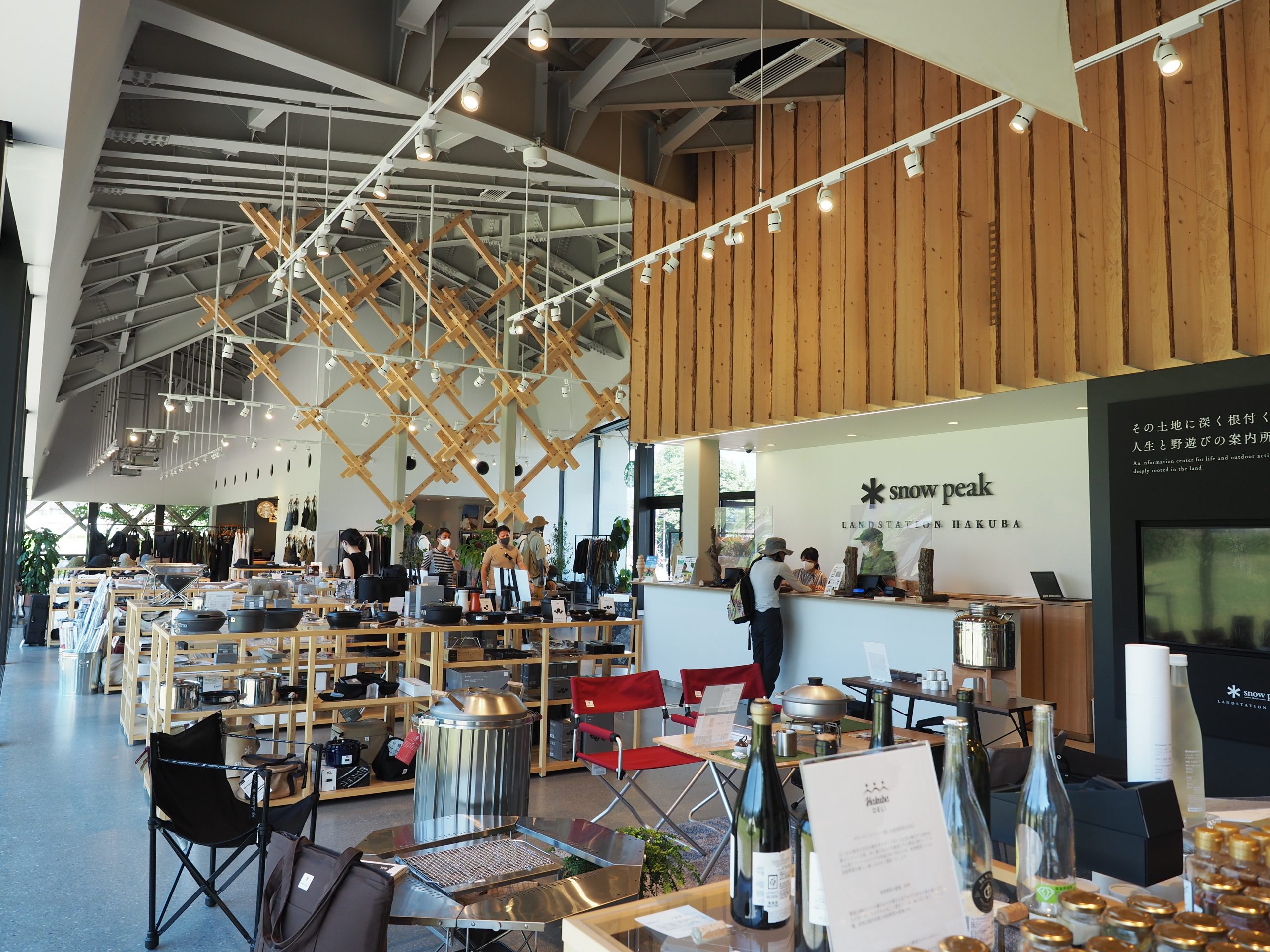
Visitors heading to Hakuba can take advantage of a range of outdoor stores including the always popular Snow Peak Land Station. Combining a brand store, café and restaurant, Snow Peak is destination to itself and a tempting place to spend some money on high-end outdoor gear from one of Japan’s most popular brands.
5 / BOOK WITH US! NAGANO’S NO.1 TOUR & CHARTER OPERATOR
Based in Nagano and operating all year round, we are Nagano’s No.1 tour and charter operator. We have the local knowledge of where to go, when to go, and what to do when you’re there to make sure you get the most out of your adventure in Central Japan! As a registered travel agent, we can arrange adventure experiences and tours, transport, accommodation and inclusive packages. So, no matter what you’re looking for, we’ve got you covered including getting you to the best outdoor destinations and events in the region.
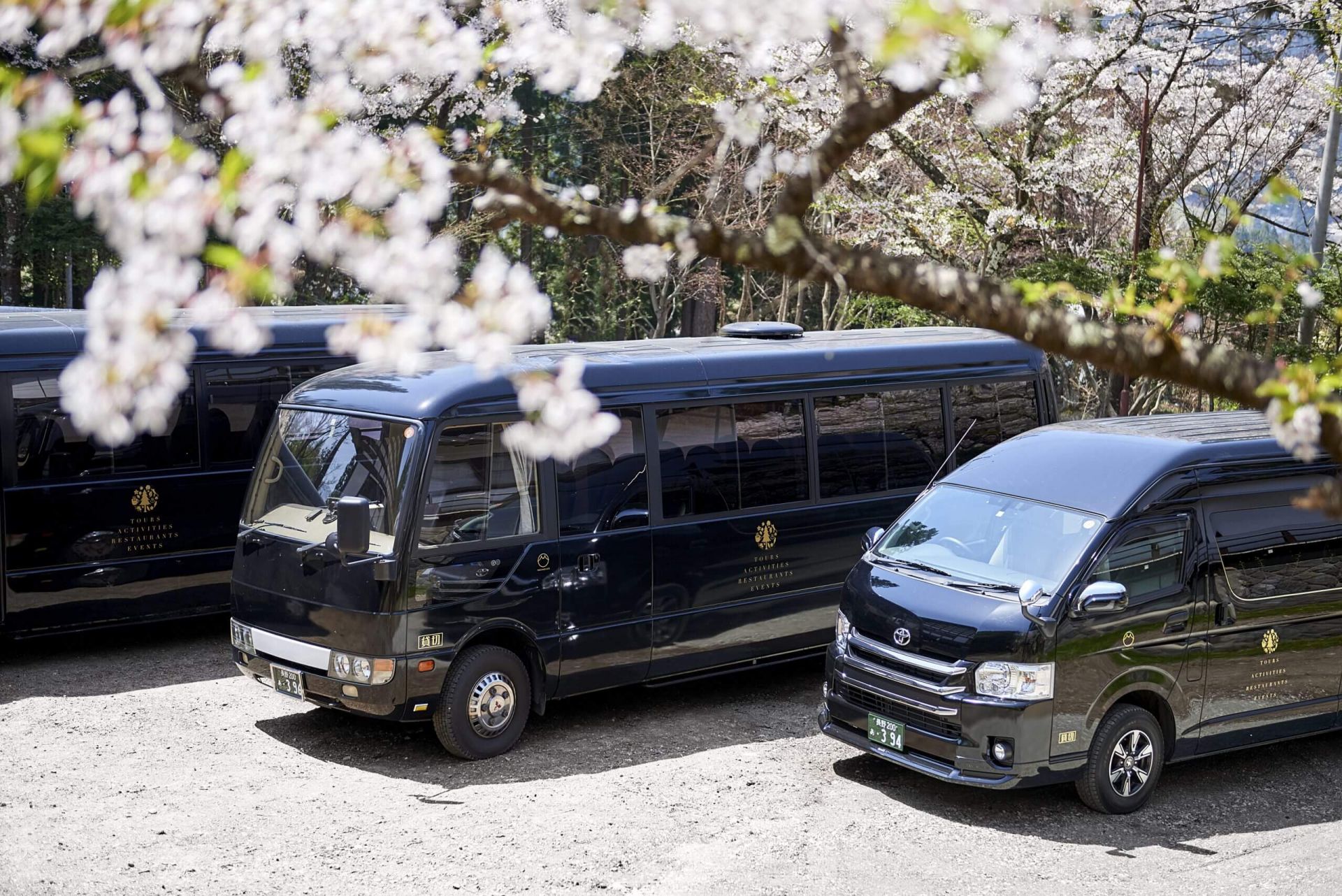

Our drivers and vehicles are fully certified, allowing us to transport you to and from your preferred destinations in combination with any activity that suits your schedule. All vehicles are well-maintained and in good condition, allowing you to relax and enjoy your ride to wherever you are going.
We can arrange both private tours with an English-speaking guide or a private charter, including a private vehicle and driver but without a guide. We’d love to be part of your adventure in Central Japan and help you discover even more!
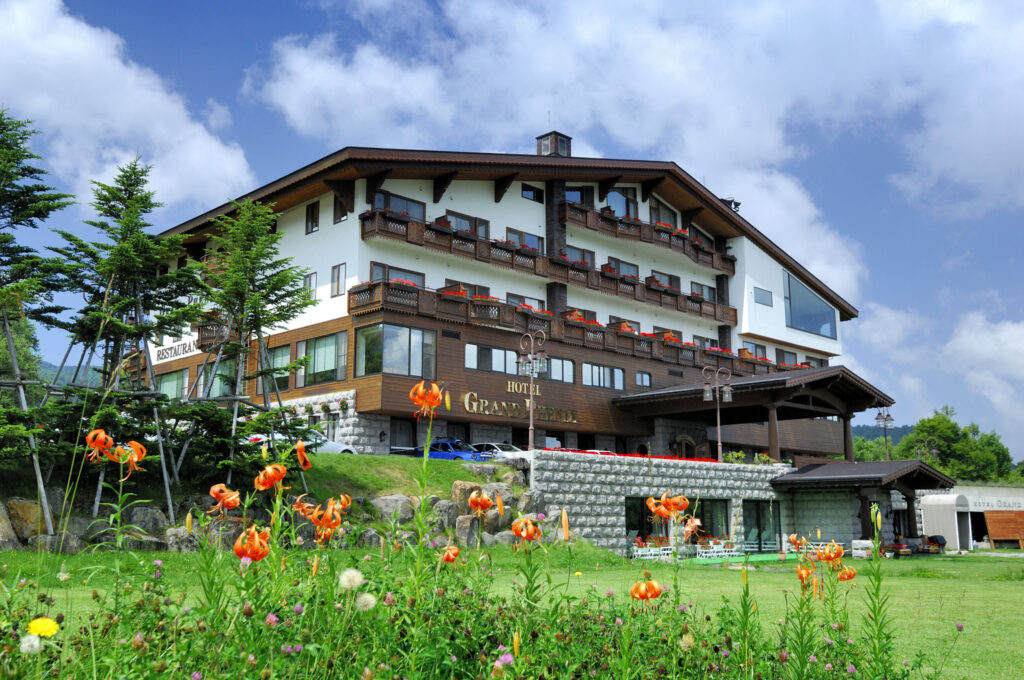
We can arrange both private tours with an English-speaking guide or a private charter, including a private vehicle and driver but without a guide. We’d love to be part of your adventure in Central Japan and help you discover even more!
Why choose us?
Awarded a 2019 TripAdvisor Travelers’ Choice Award for our 1-Day Snow Monkeys, Zenko-ji Temple & Sake Tour – recognised as one of the Top 10 Experiences in Japan – we have the local knowledge and experience to help you get the most out of your time in Nagano and Central Japan.
Got a question about visiting Nagano and Central Japan? Contact us and let’s get planning together!














